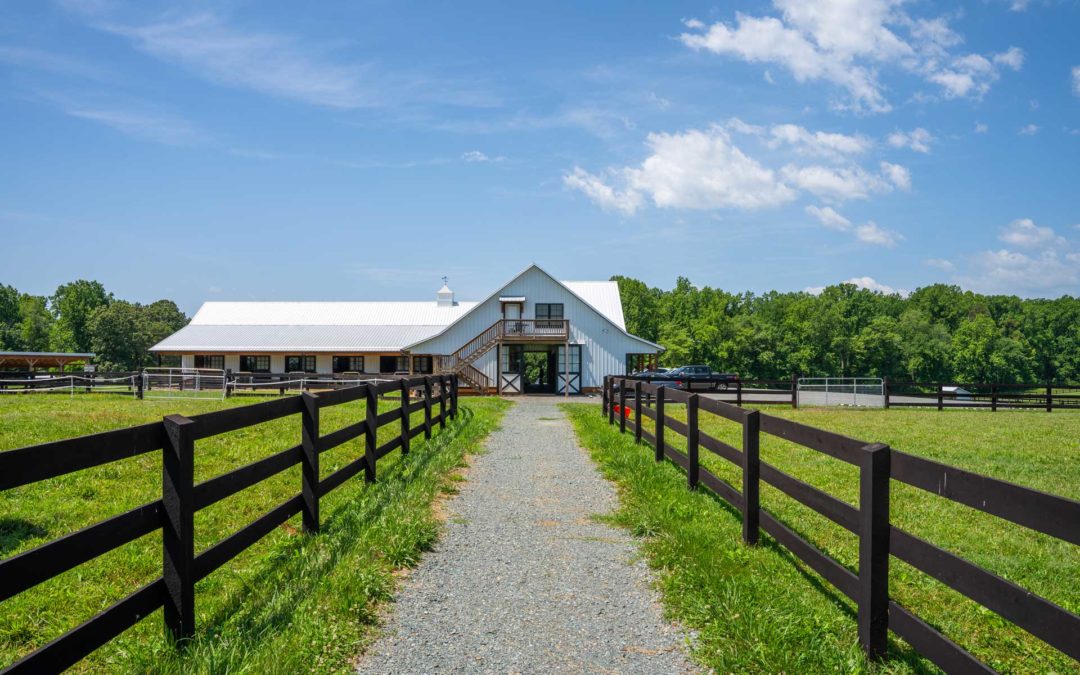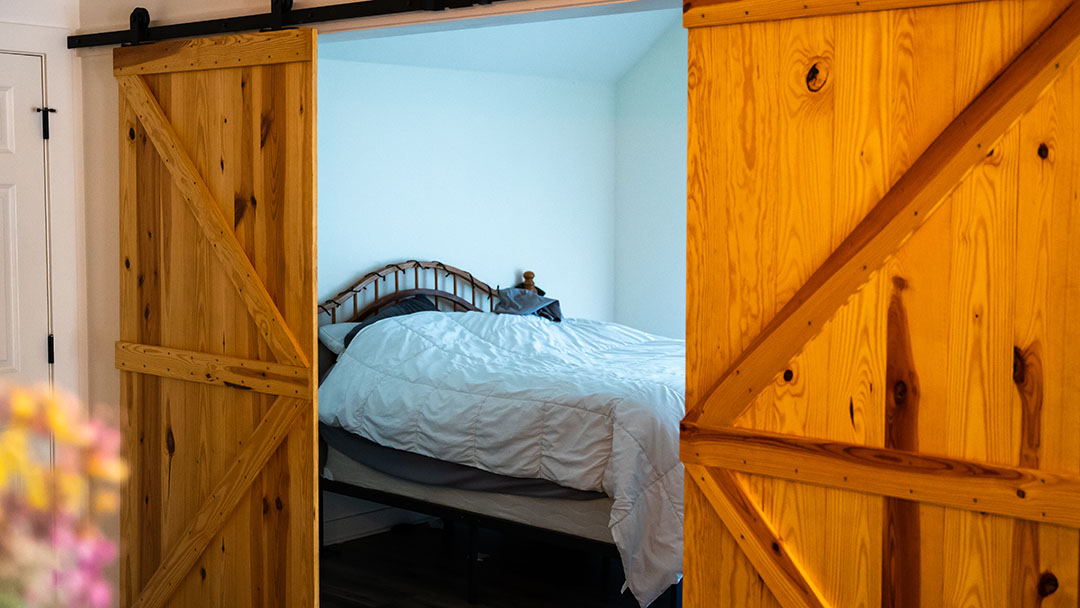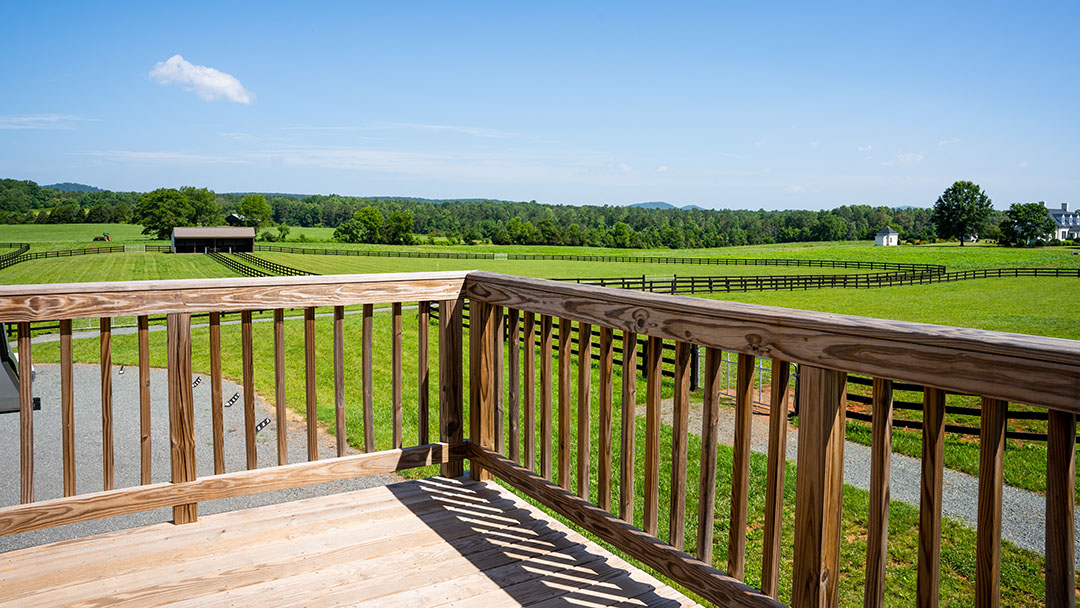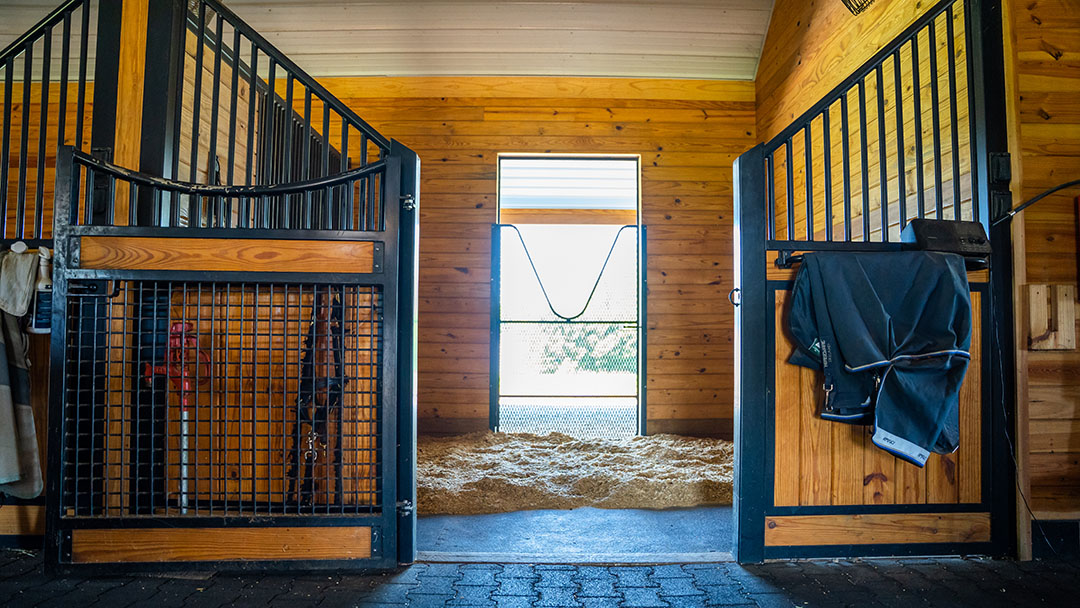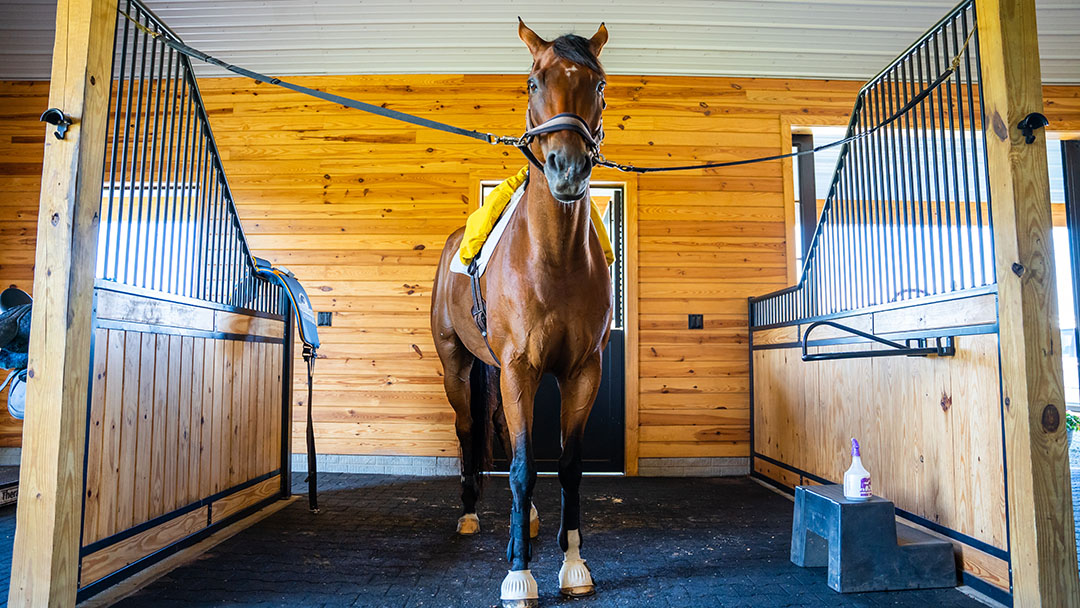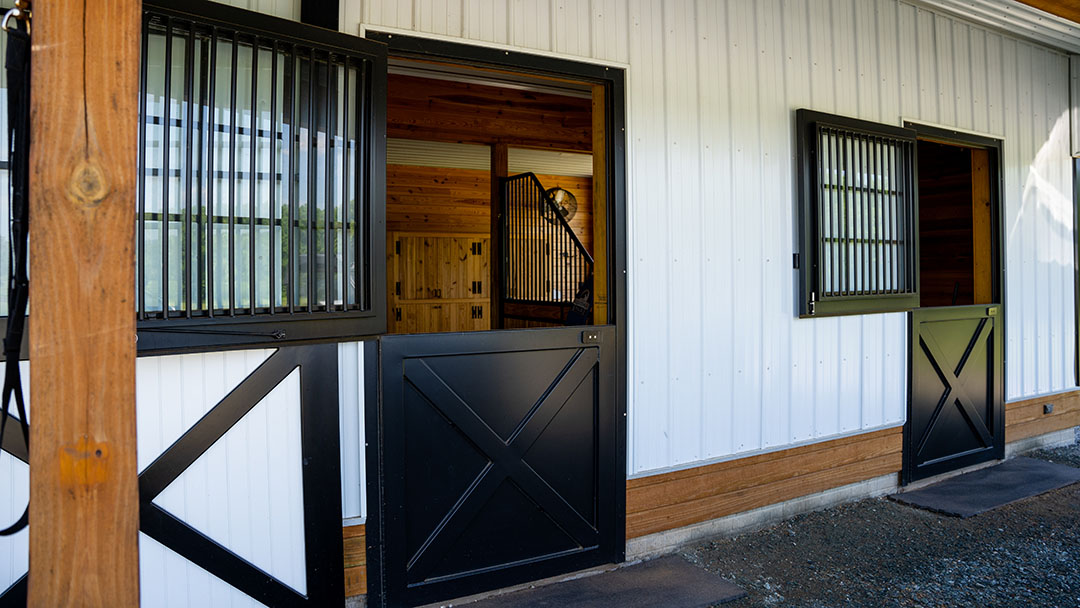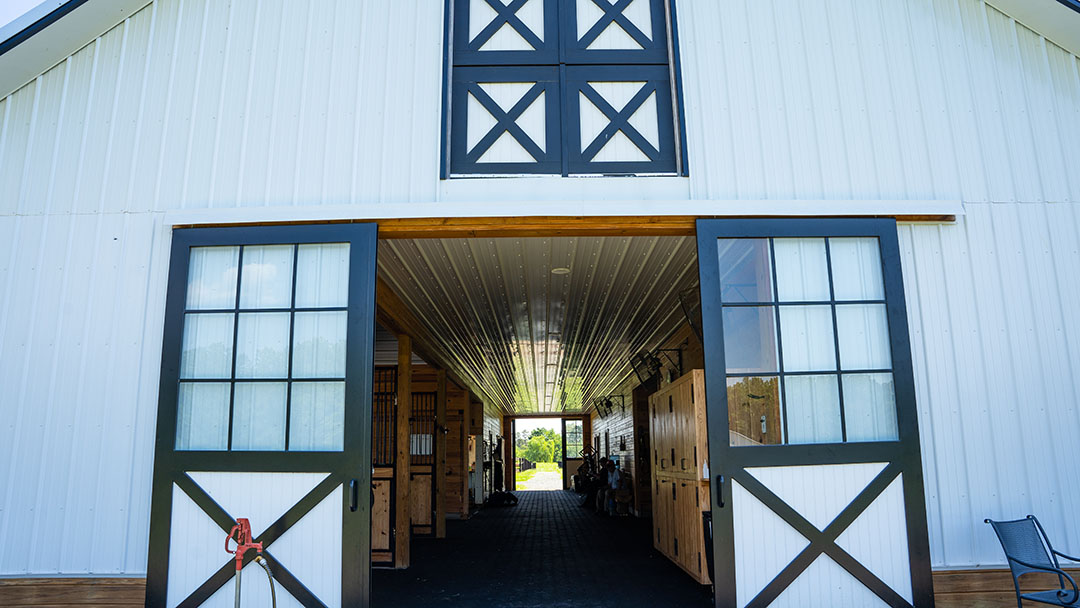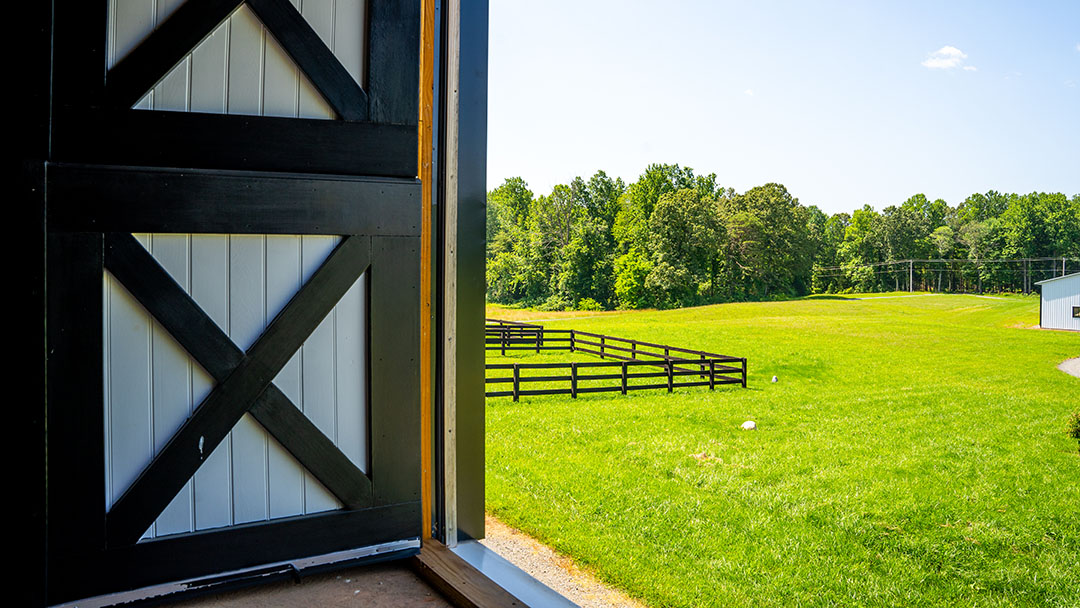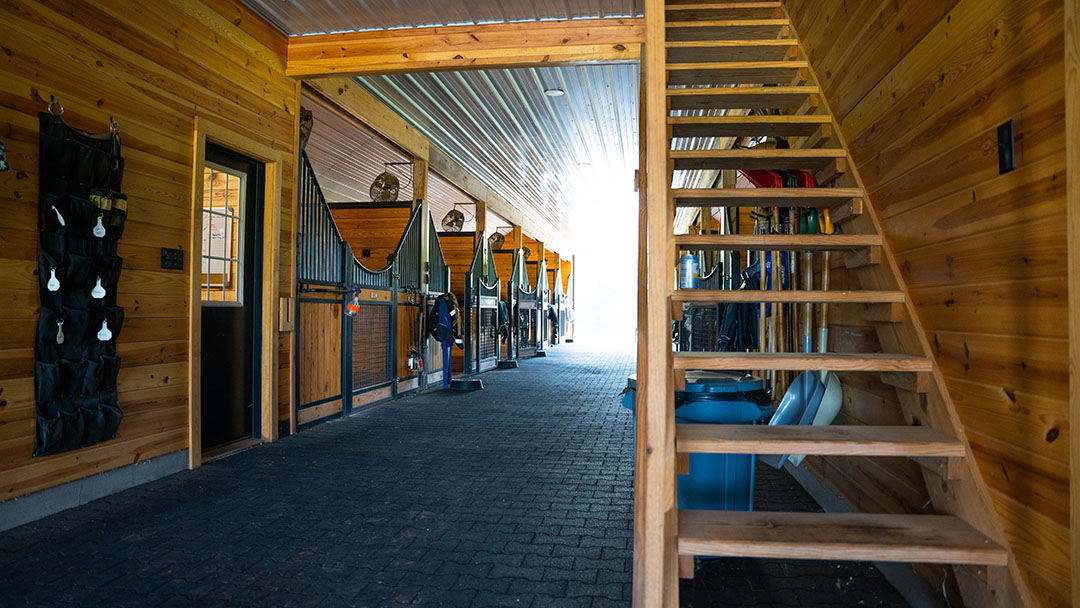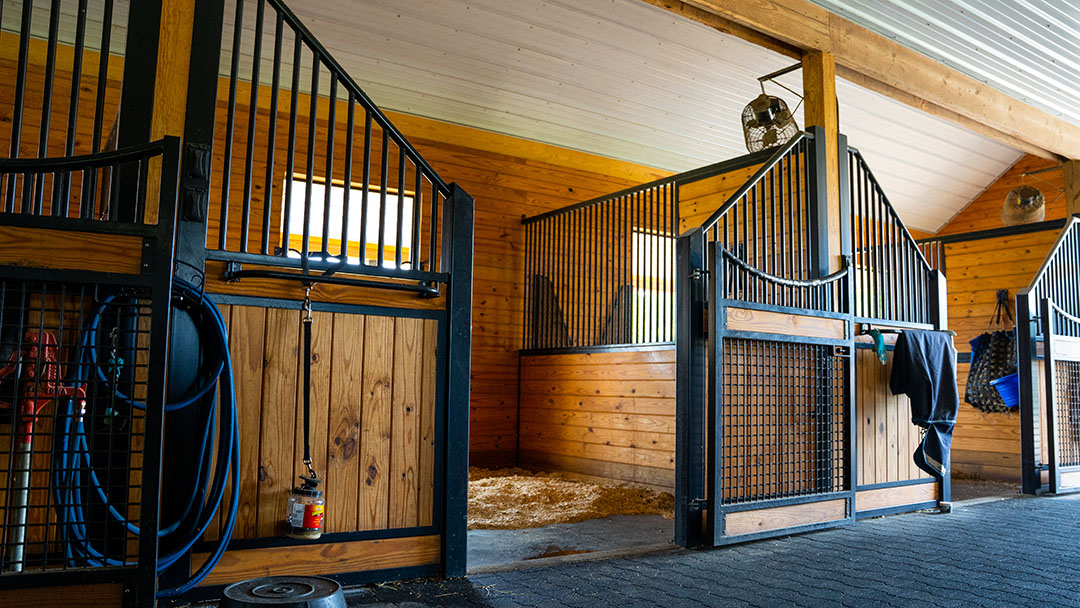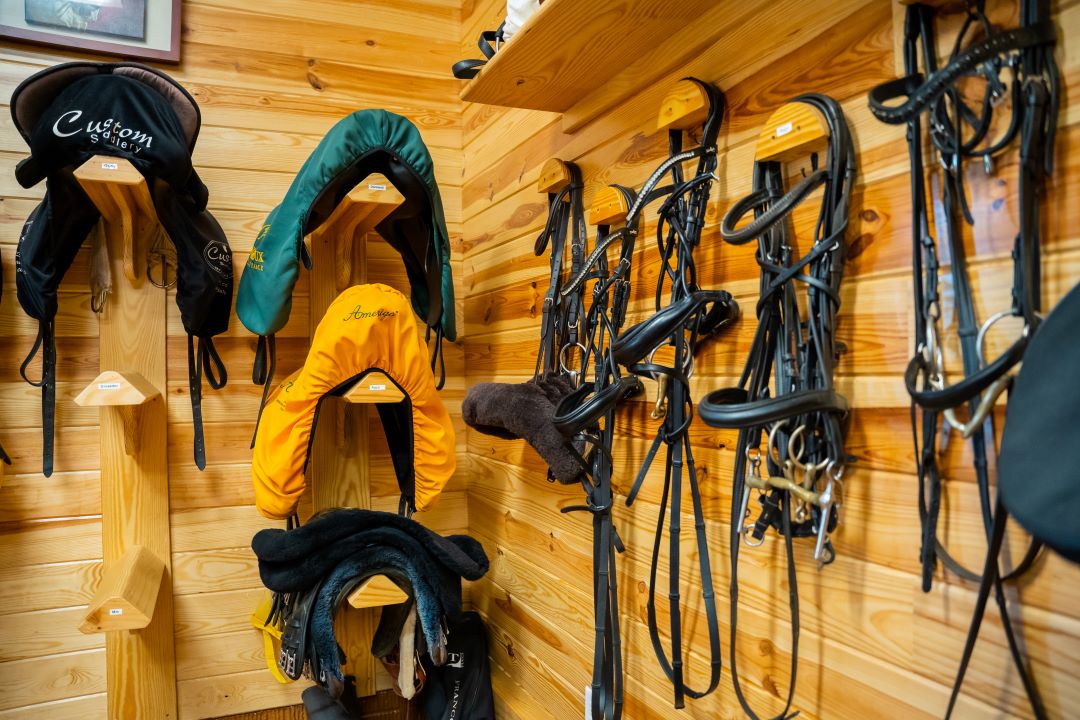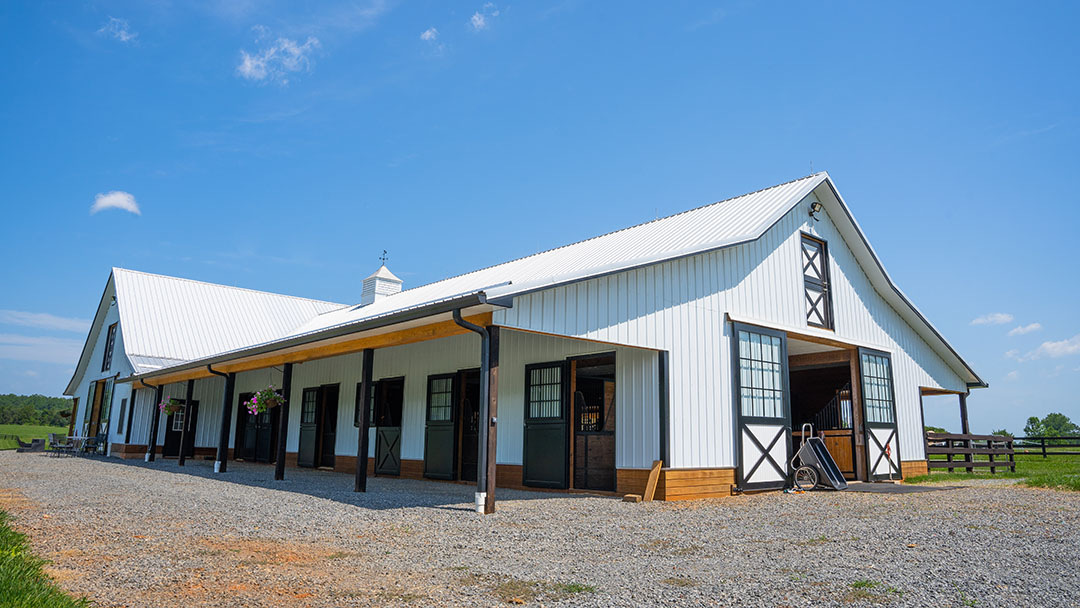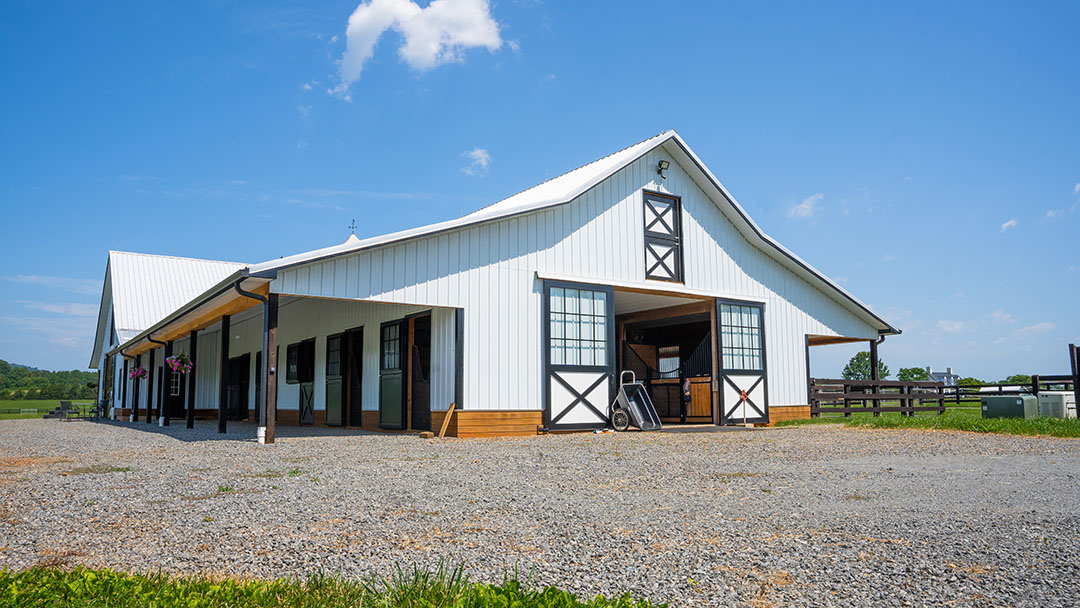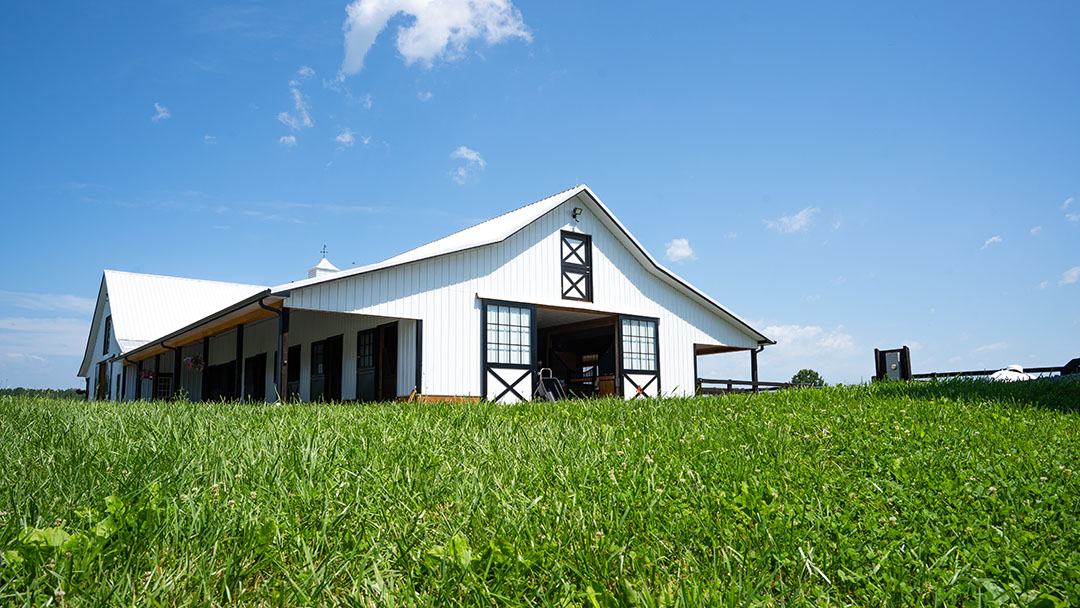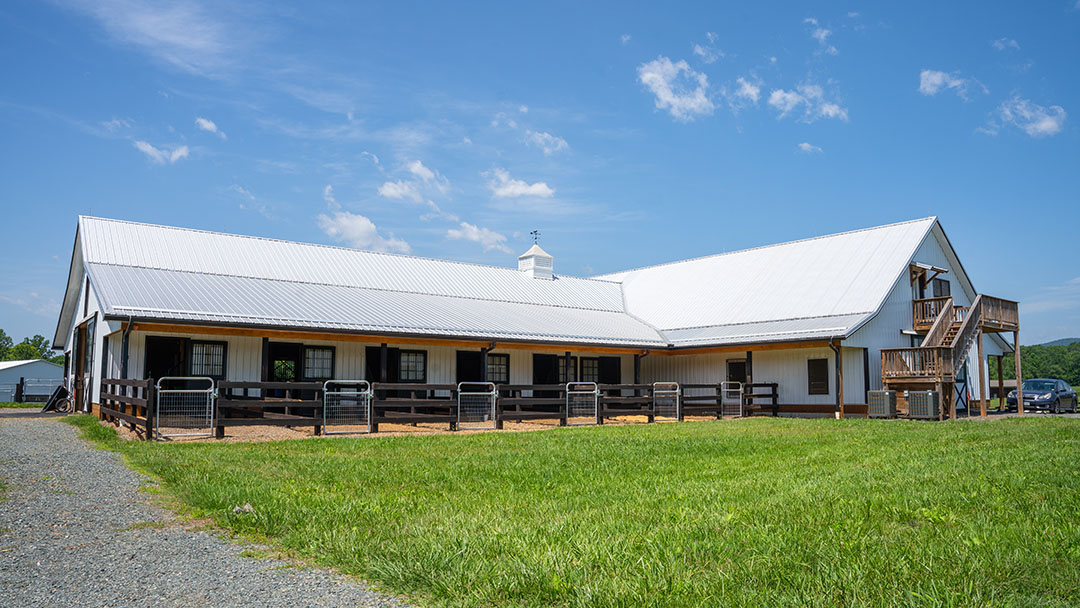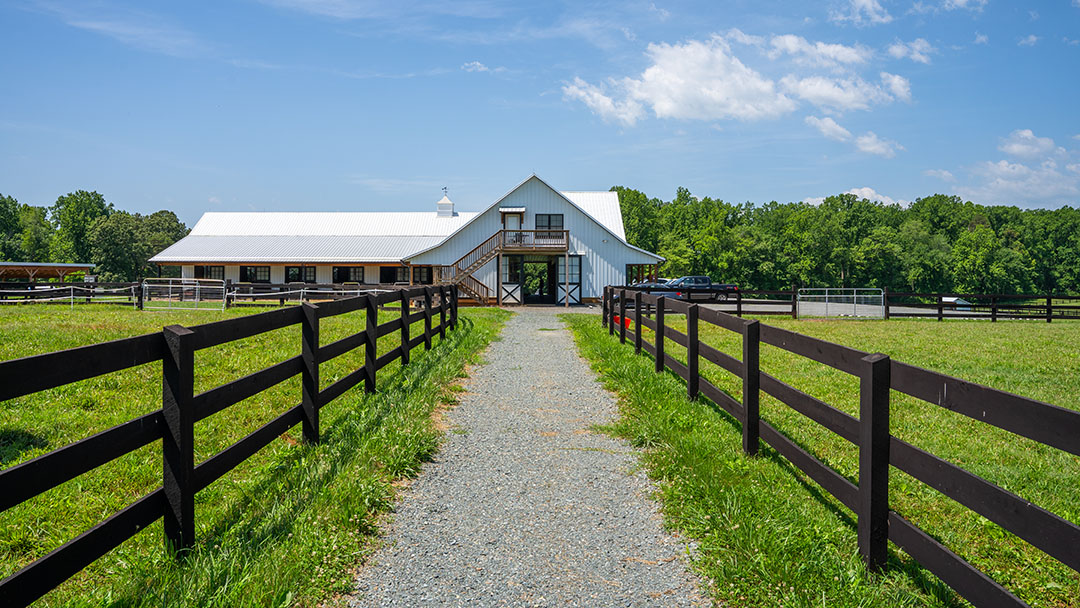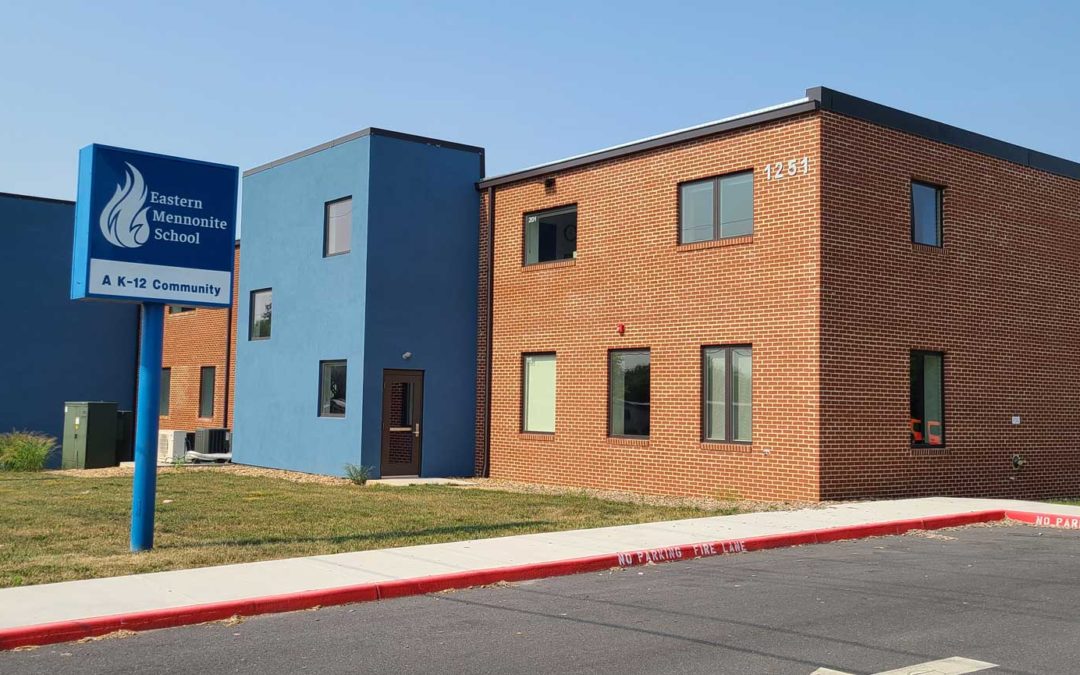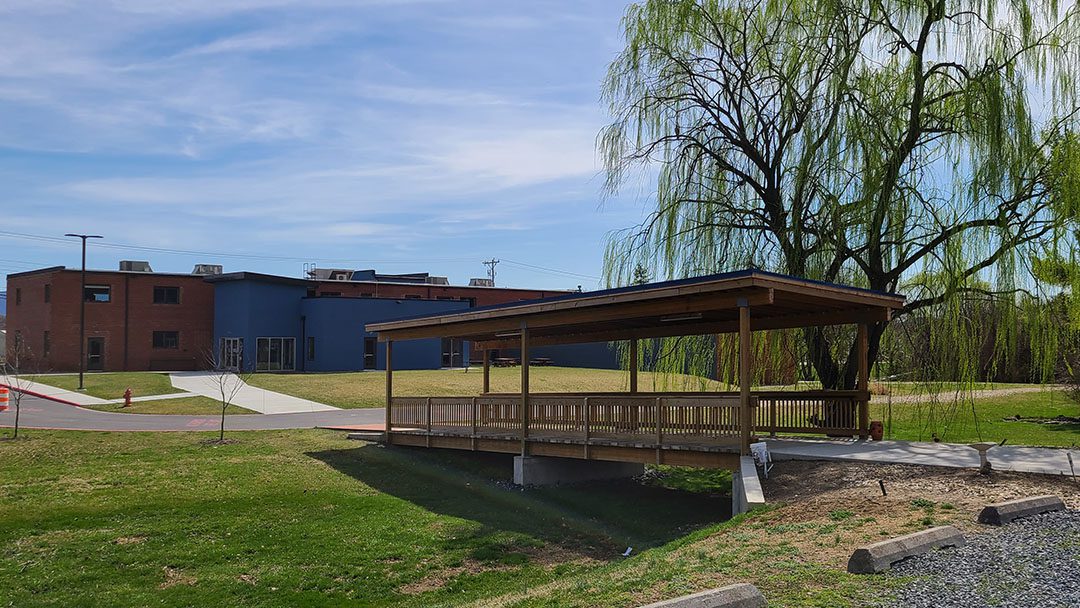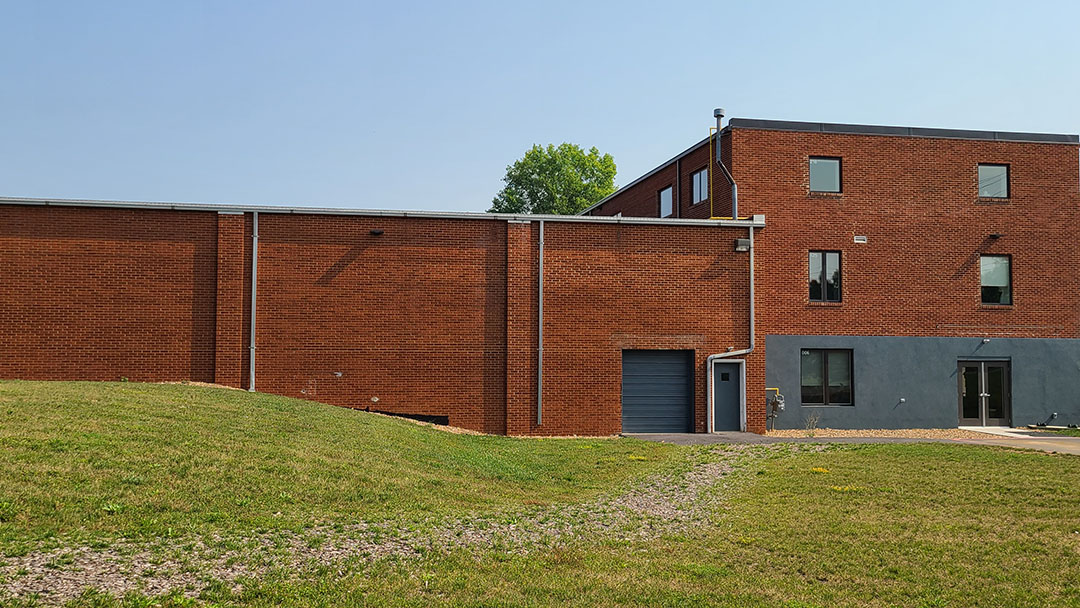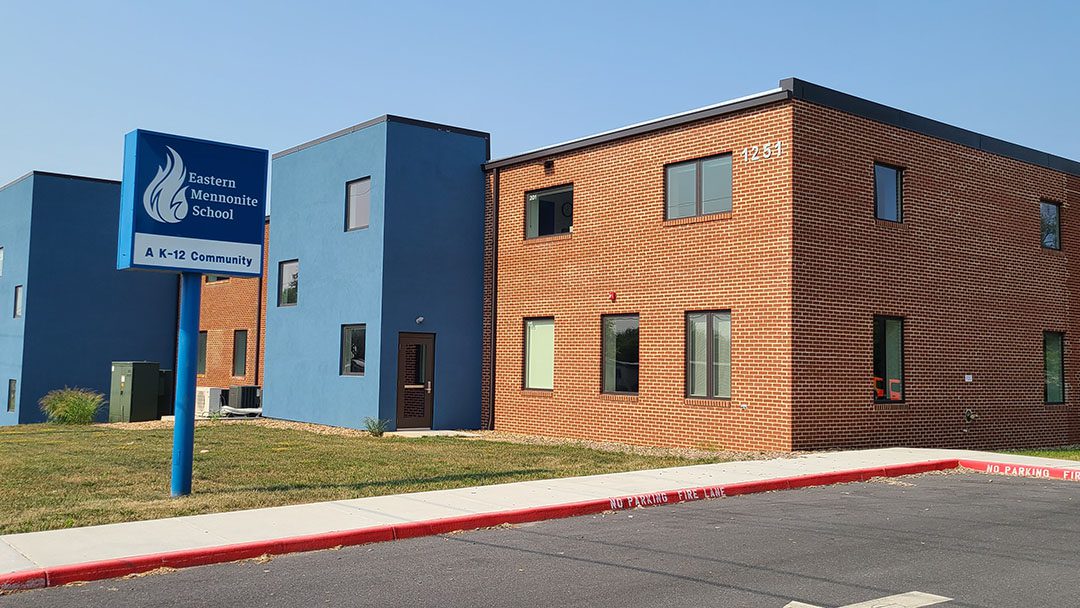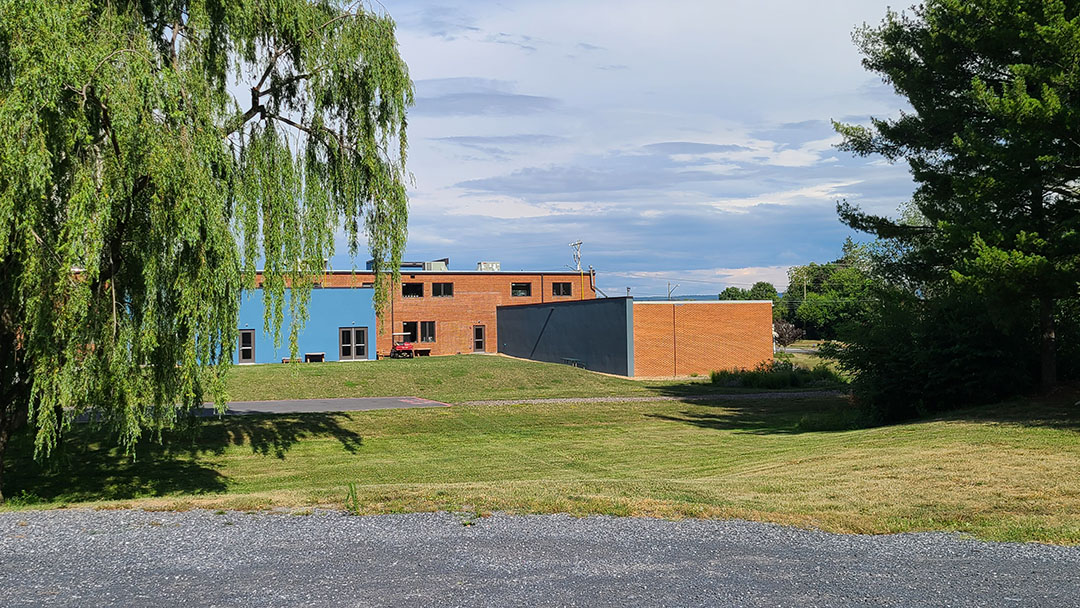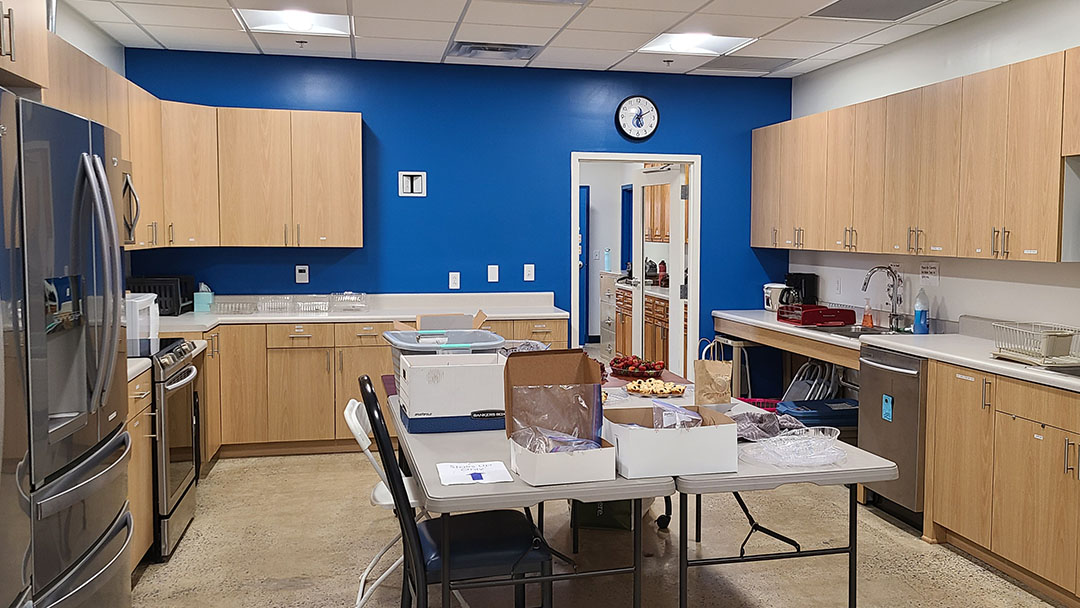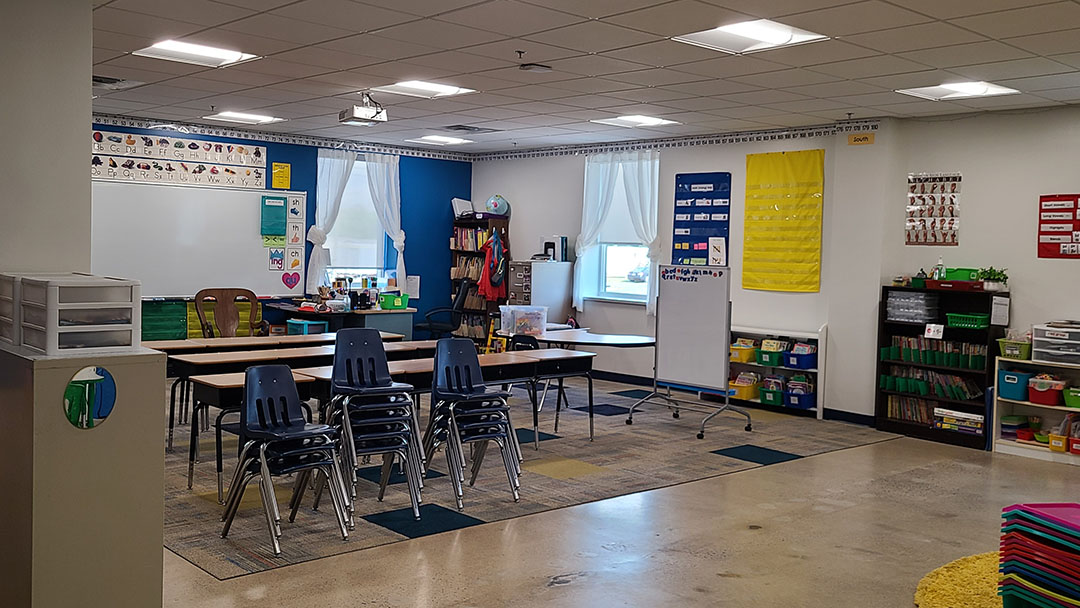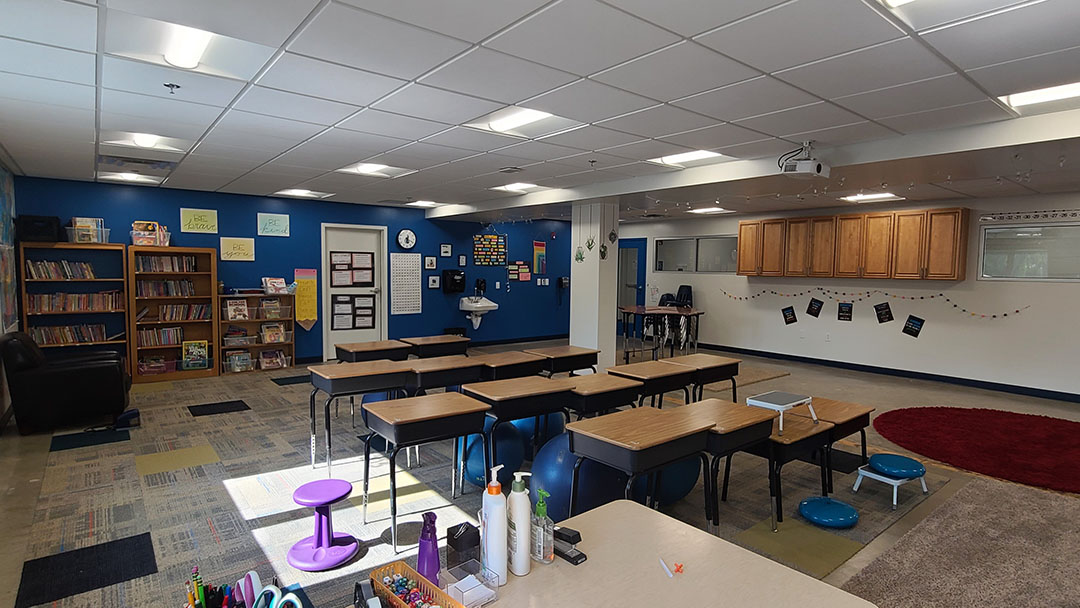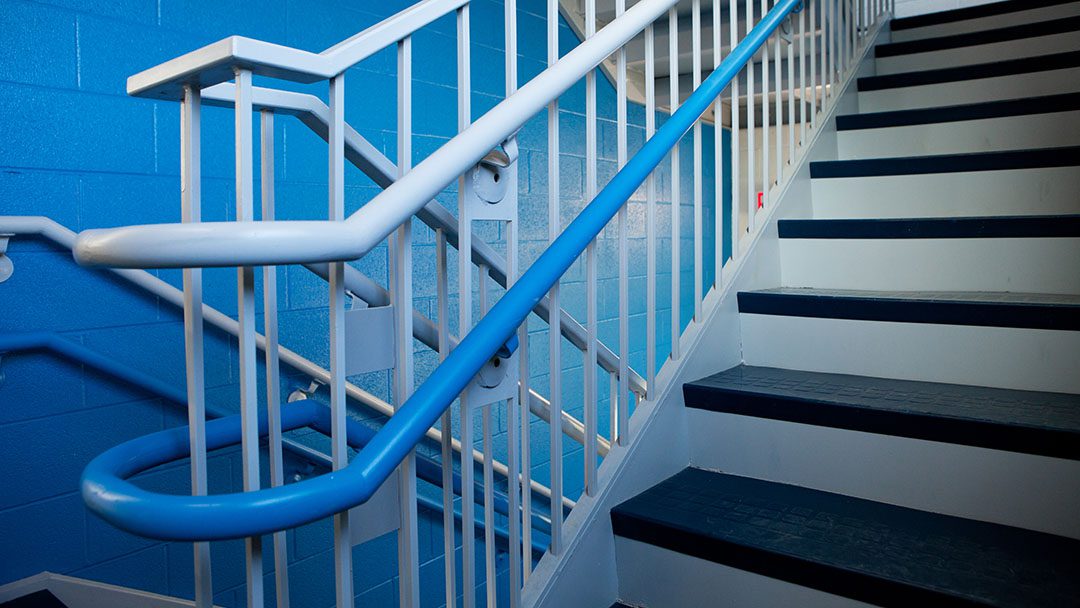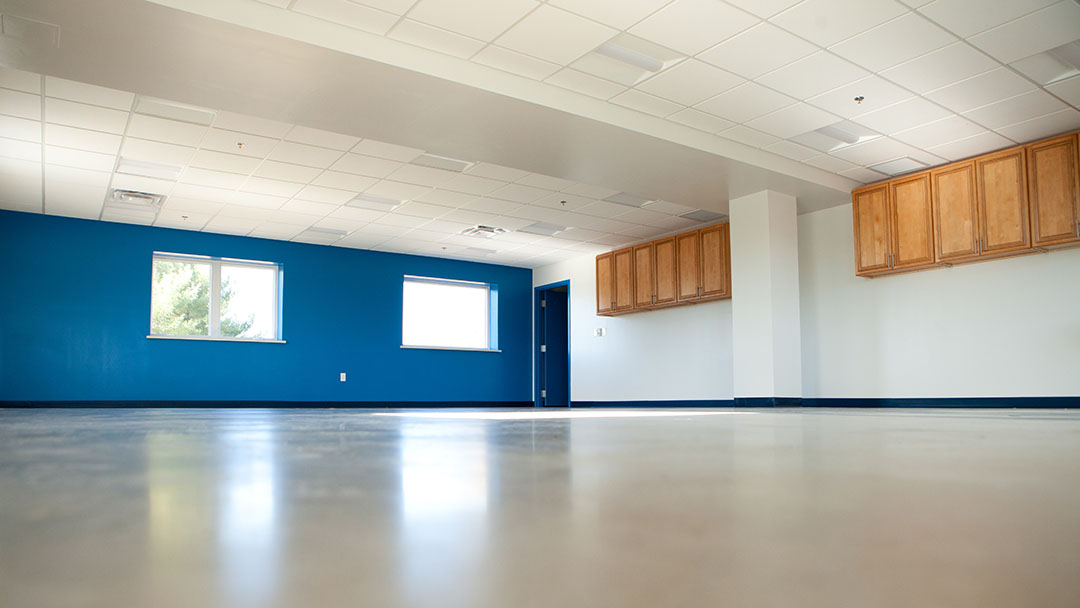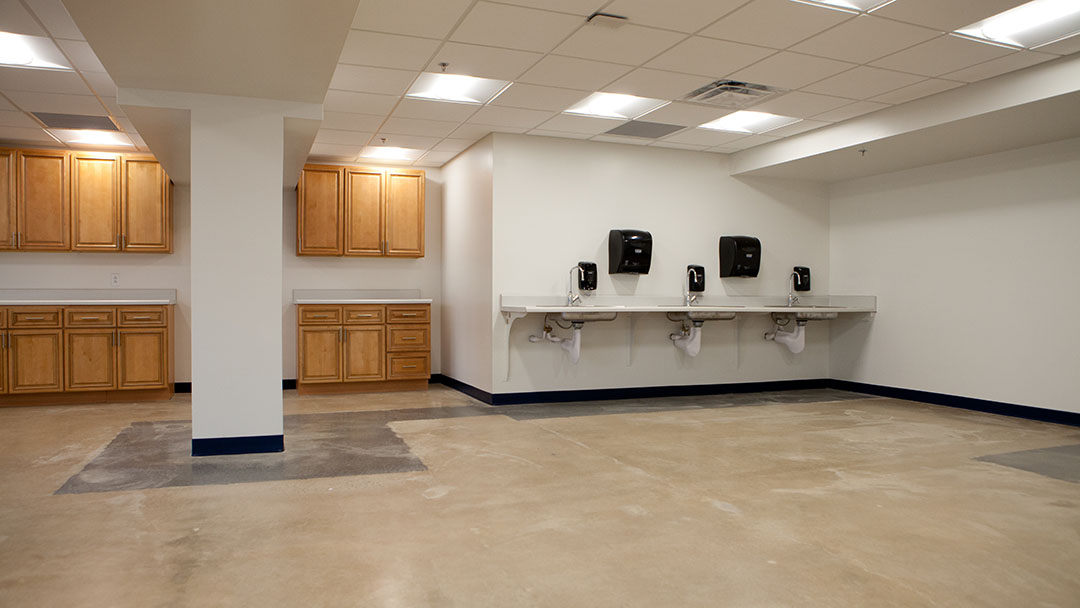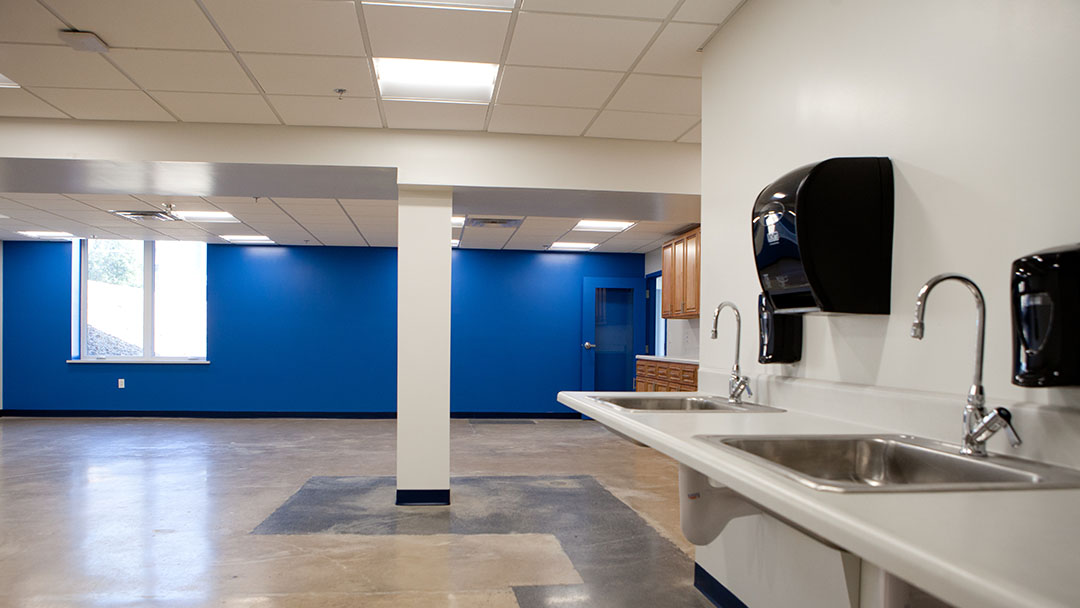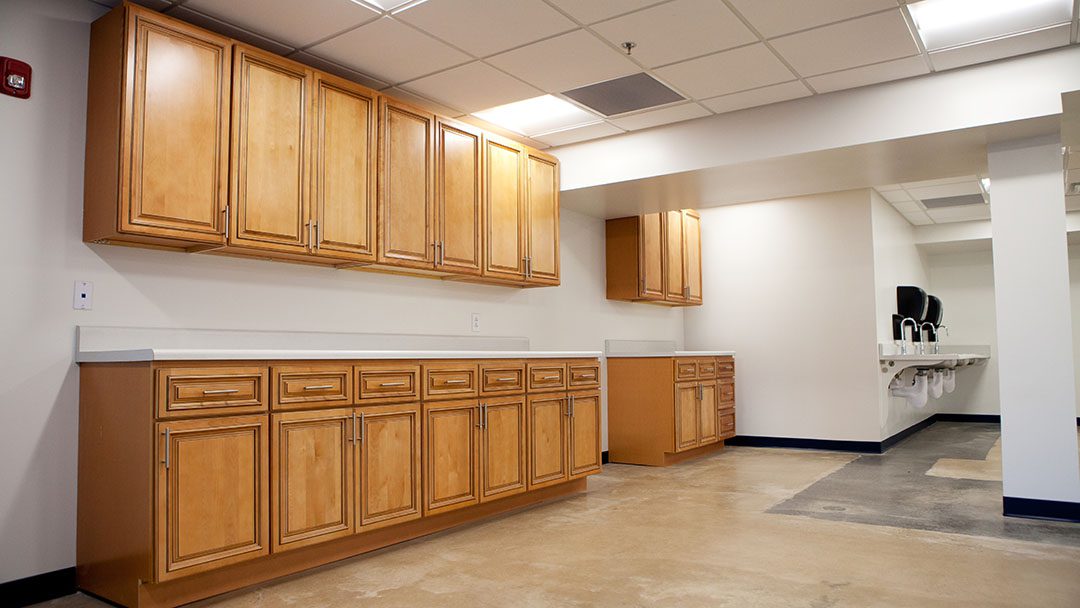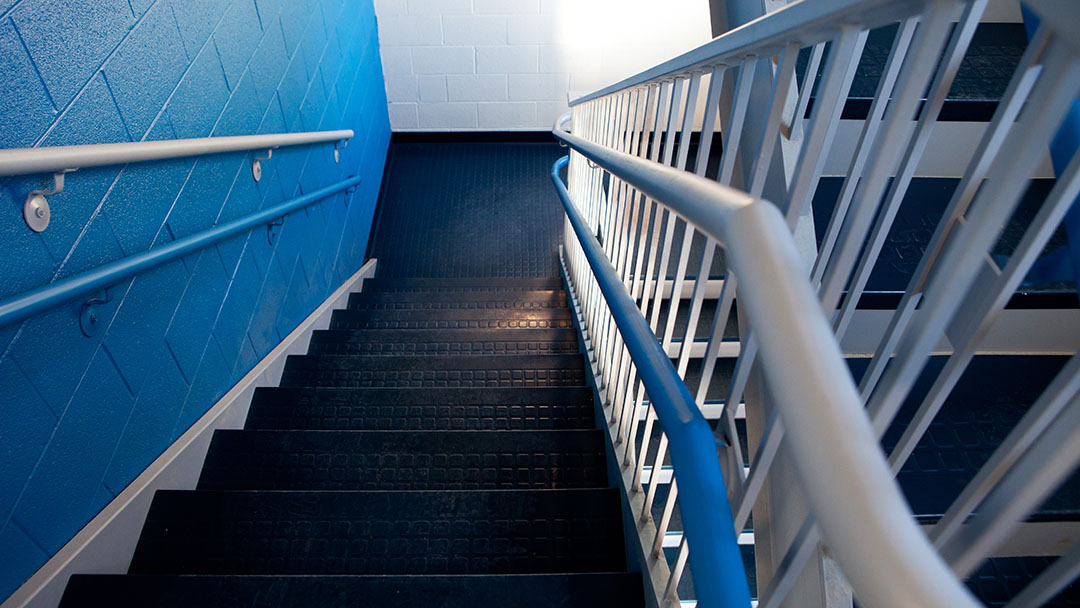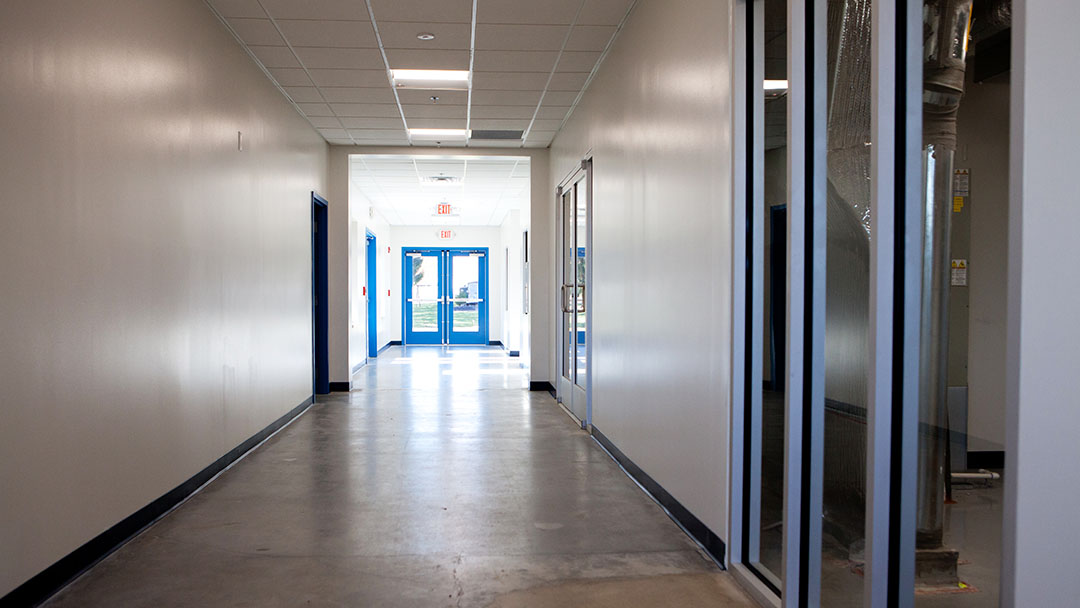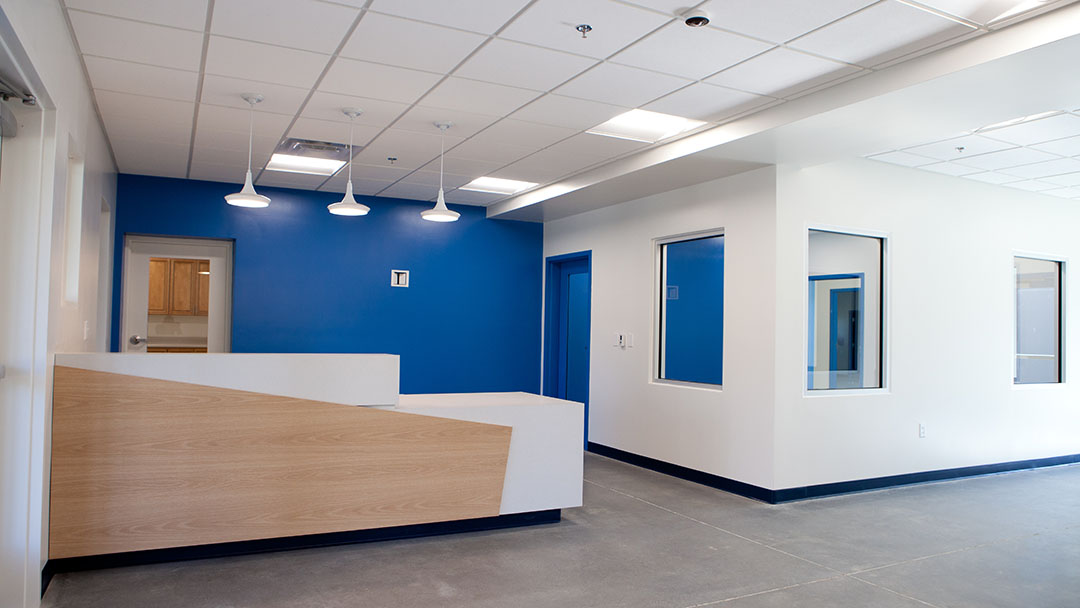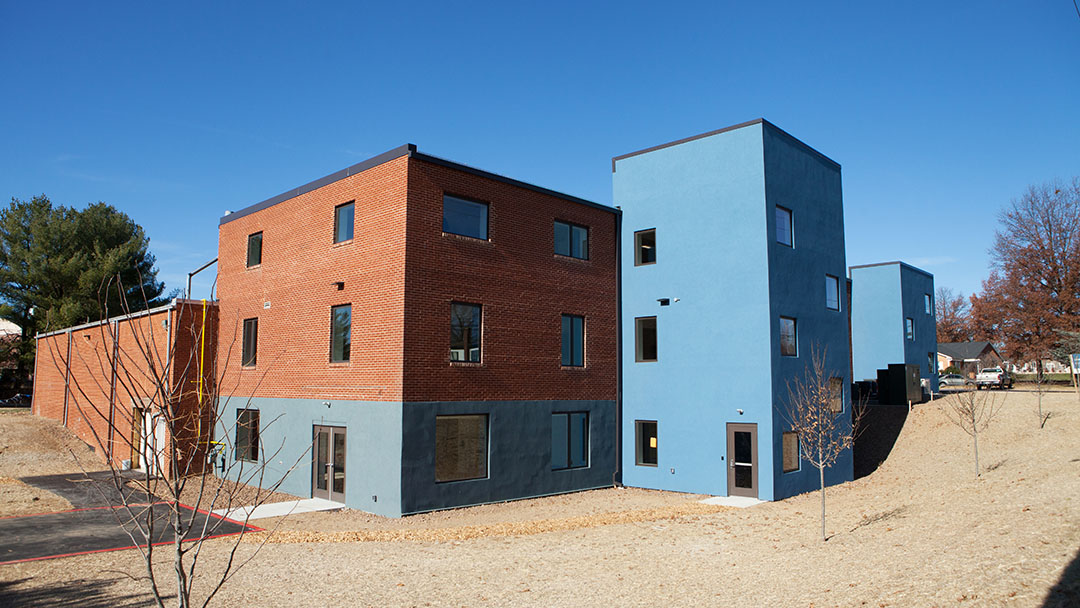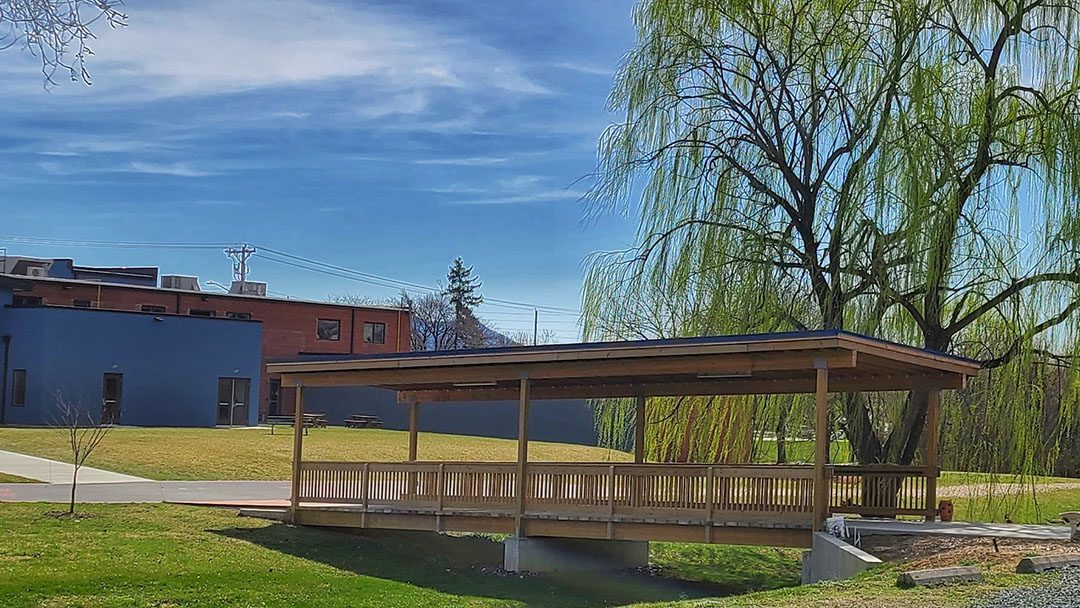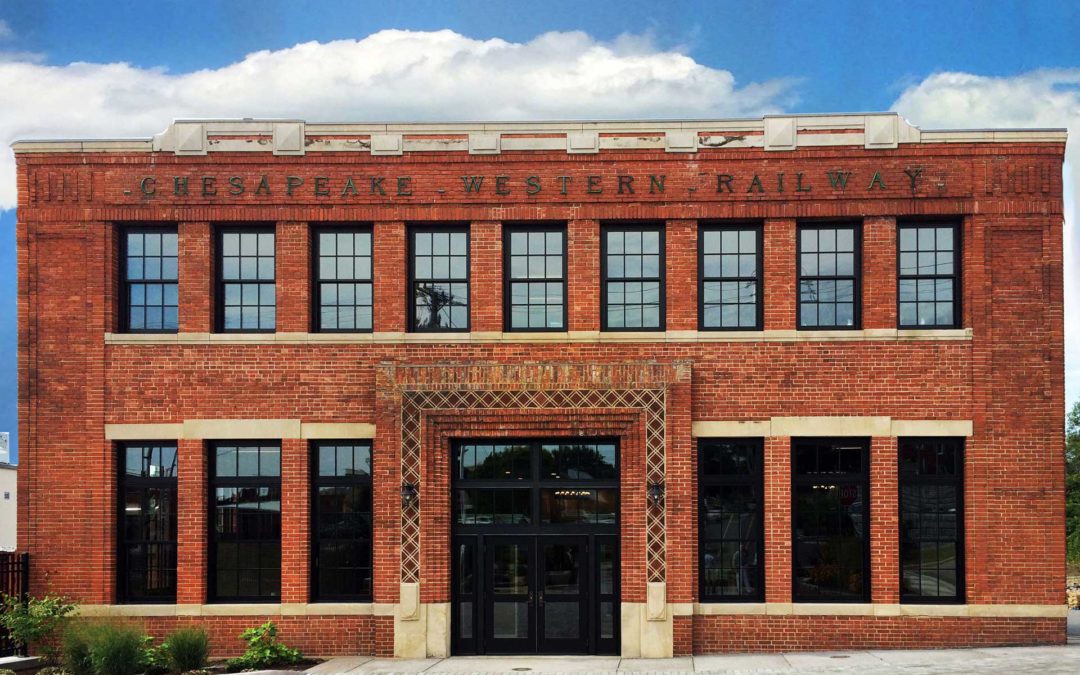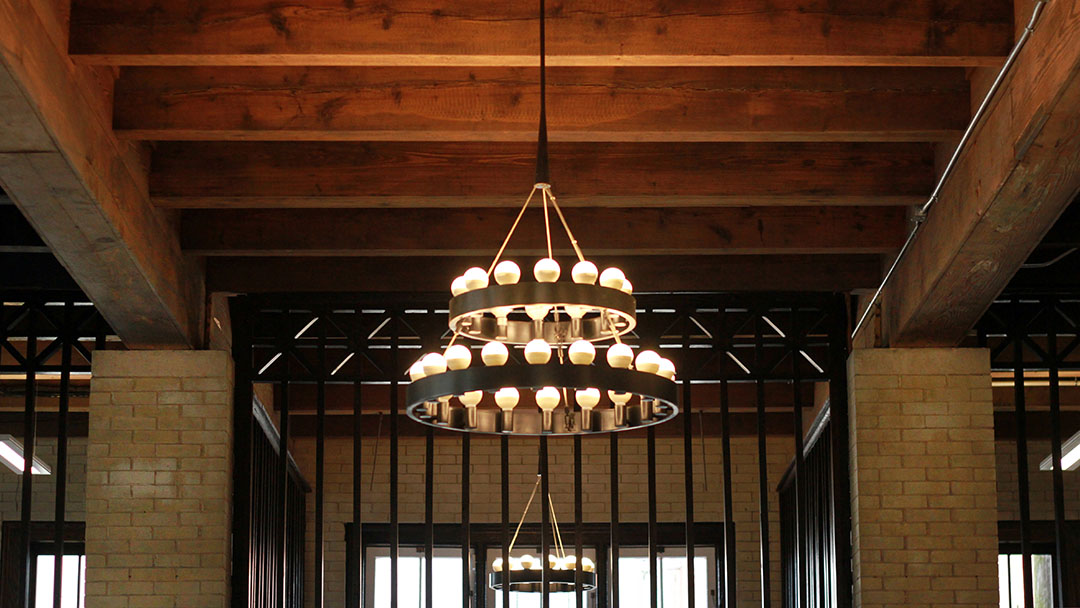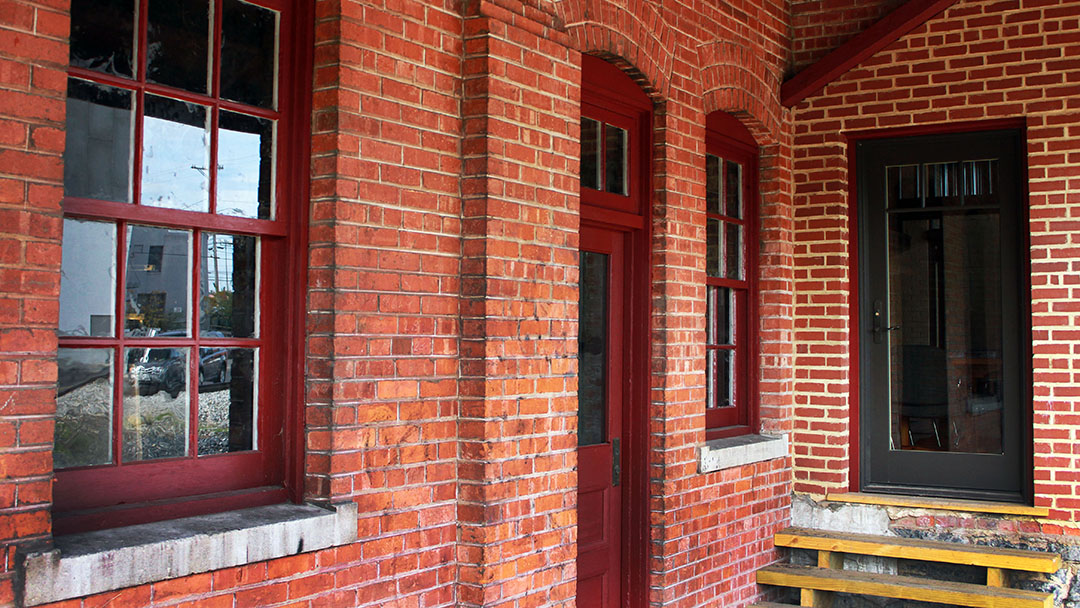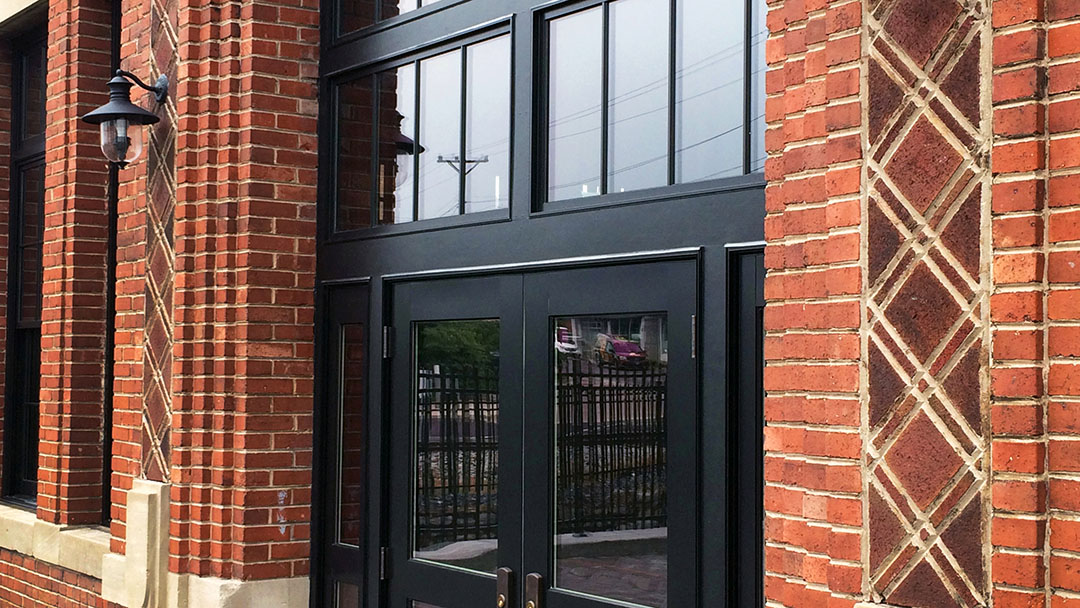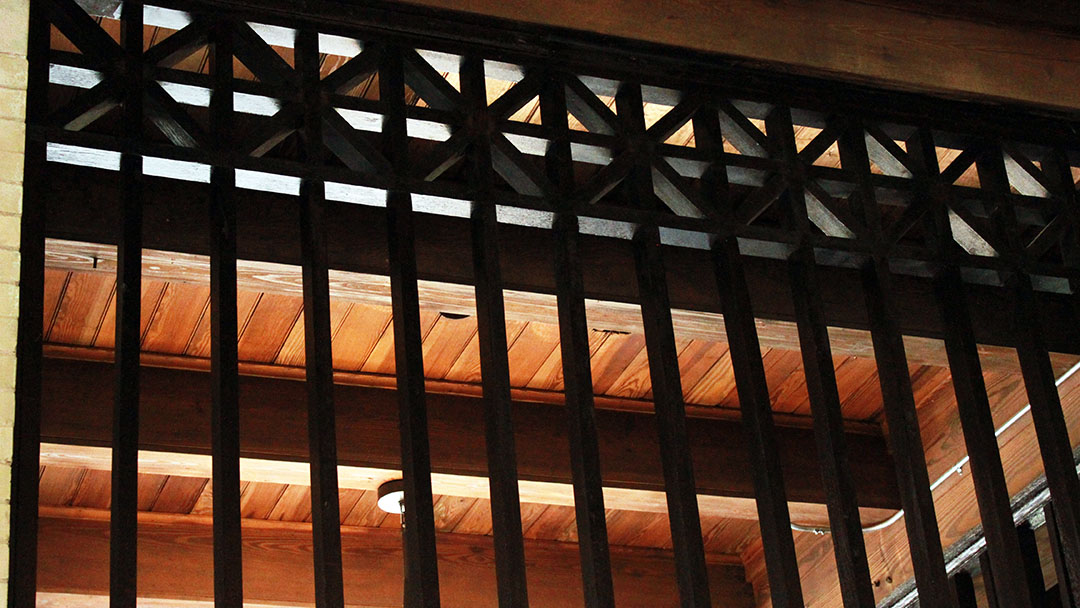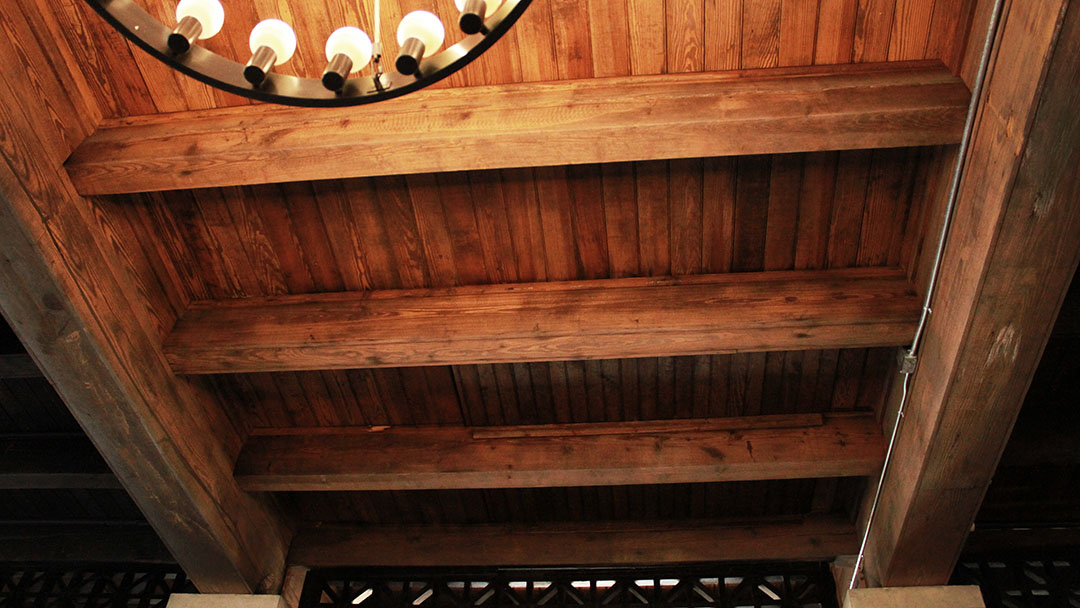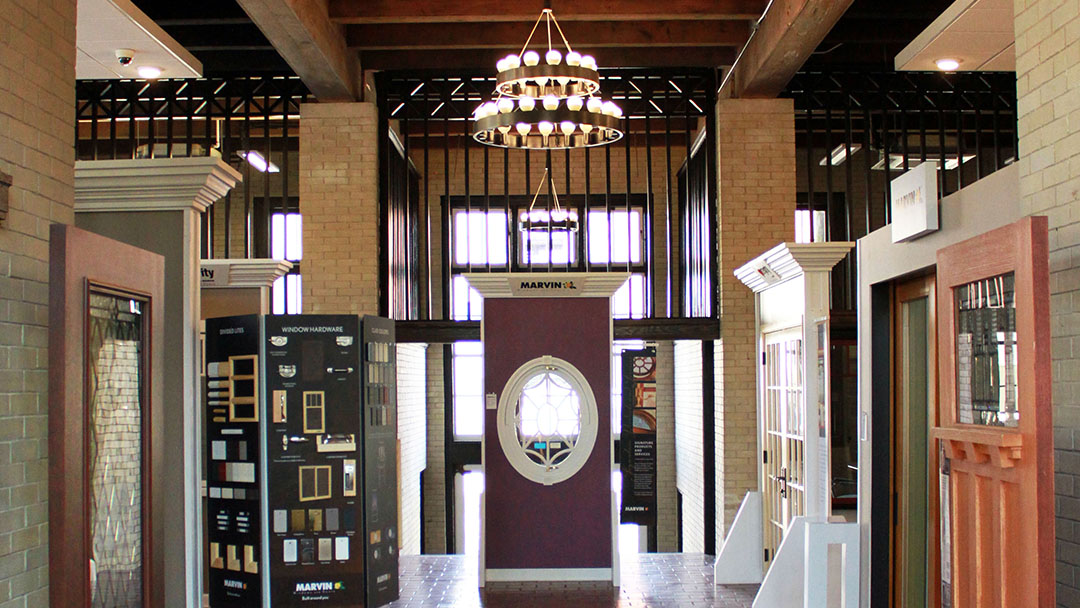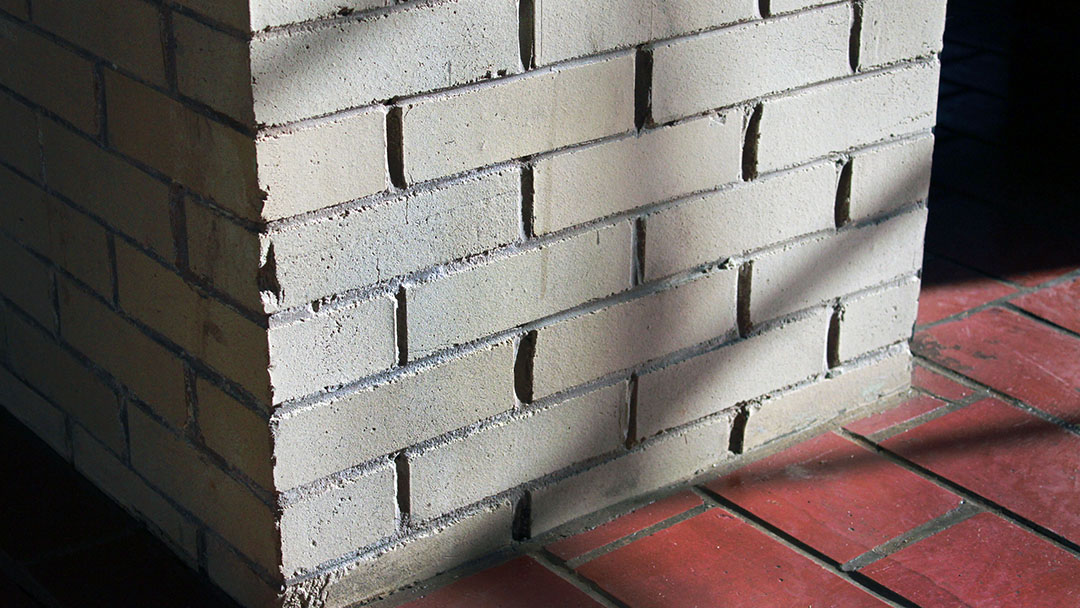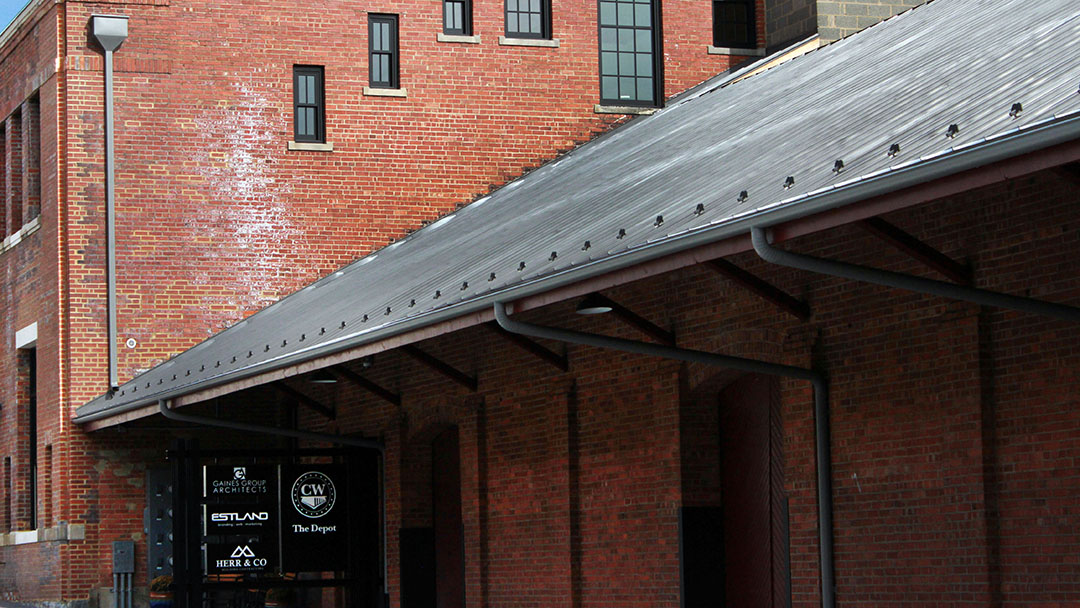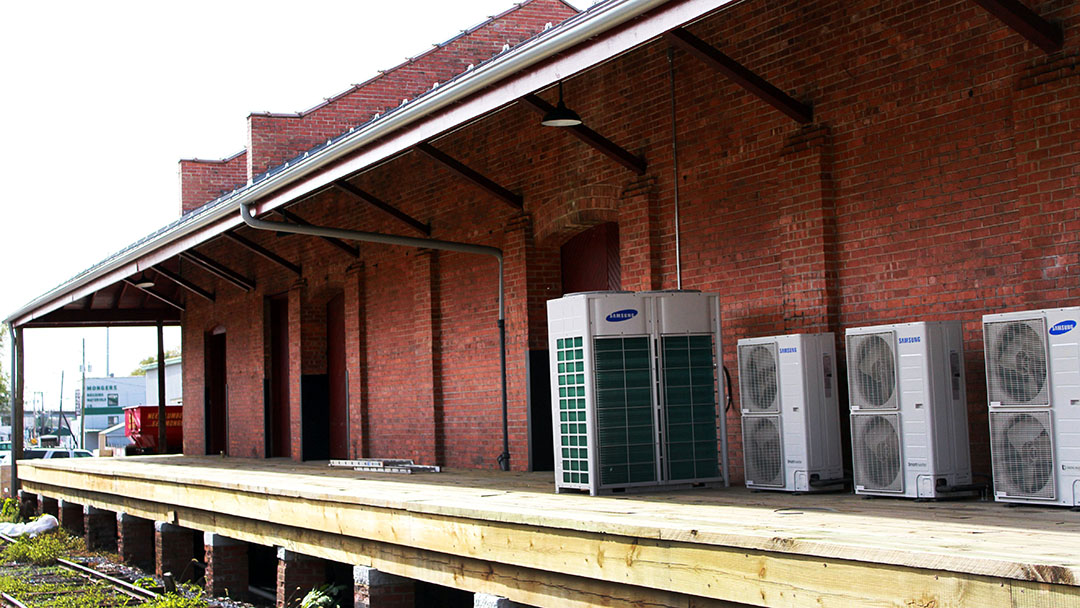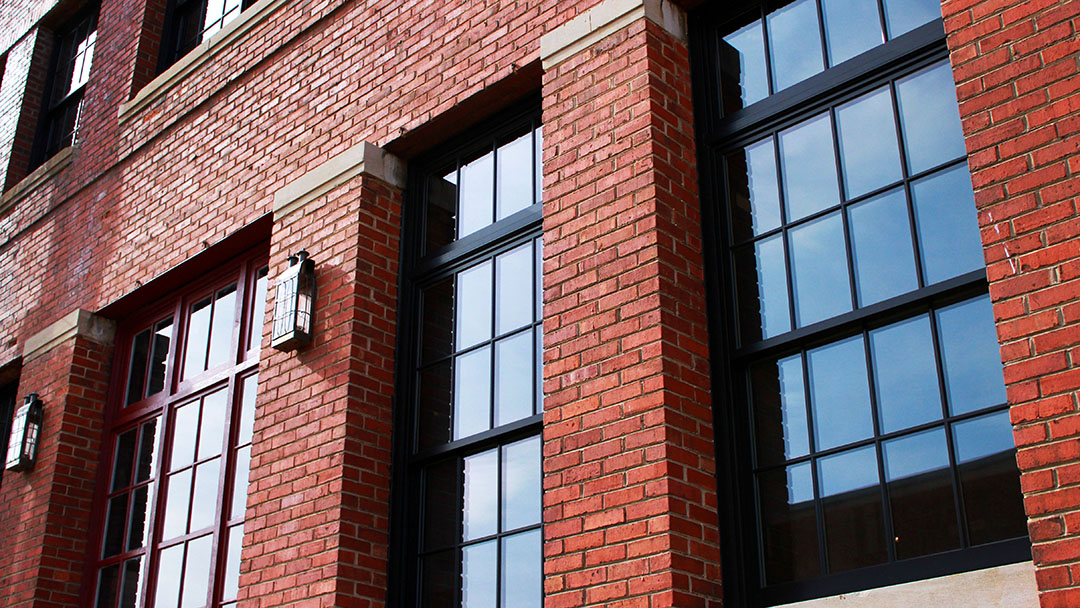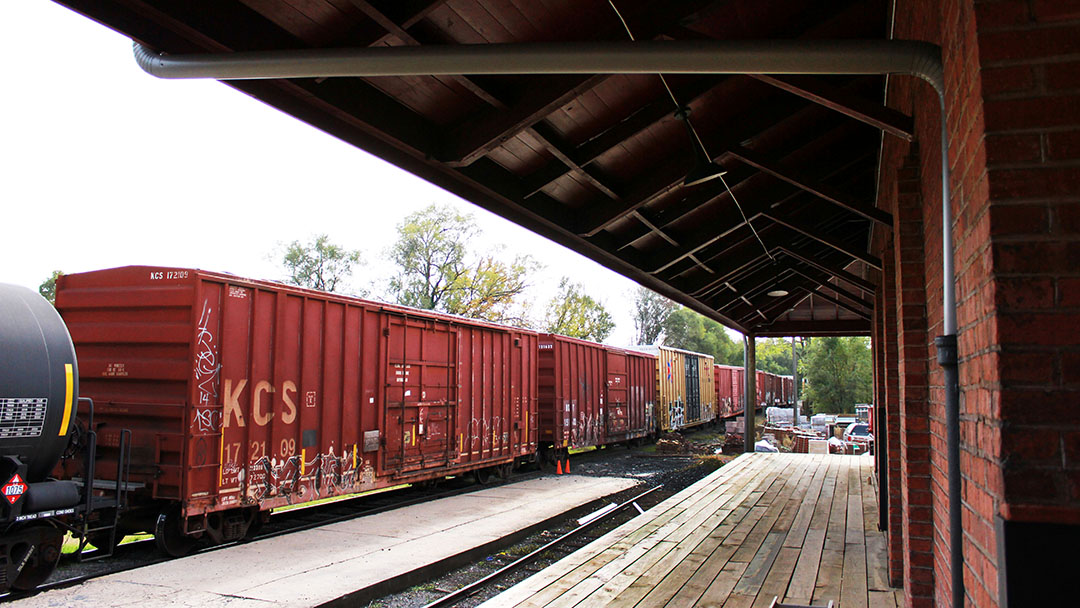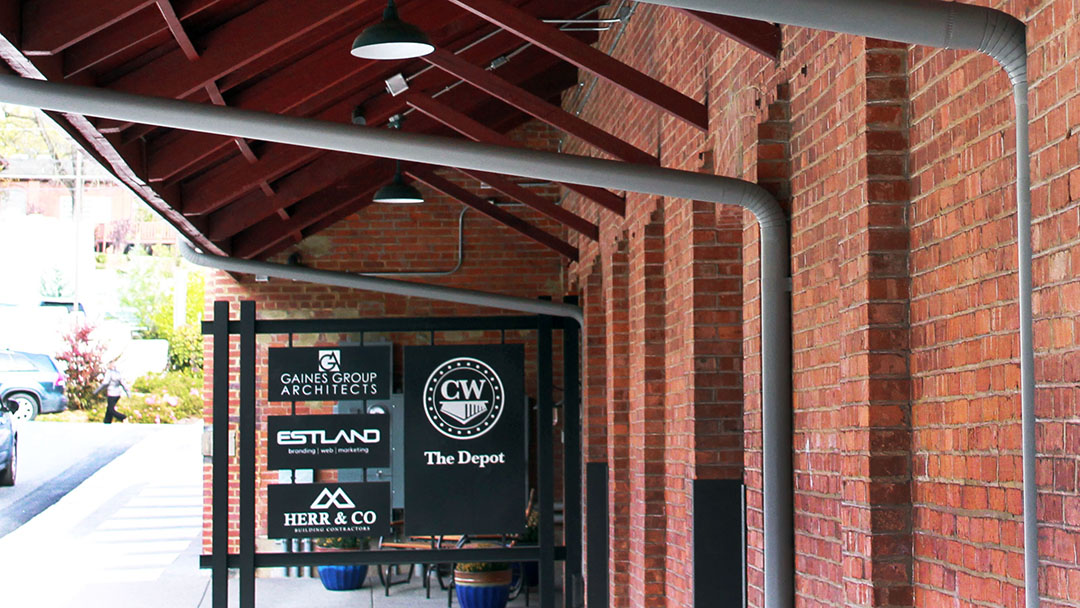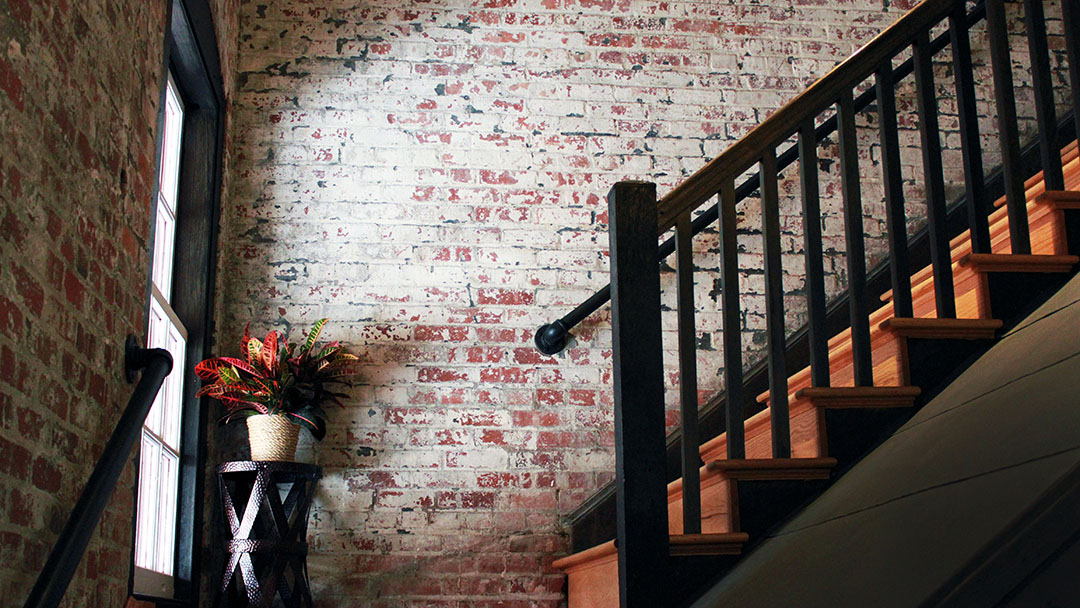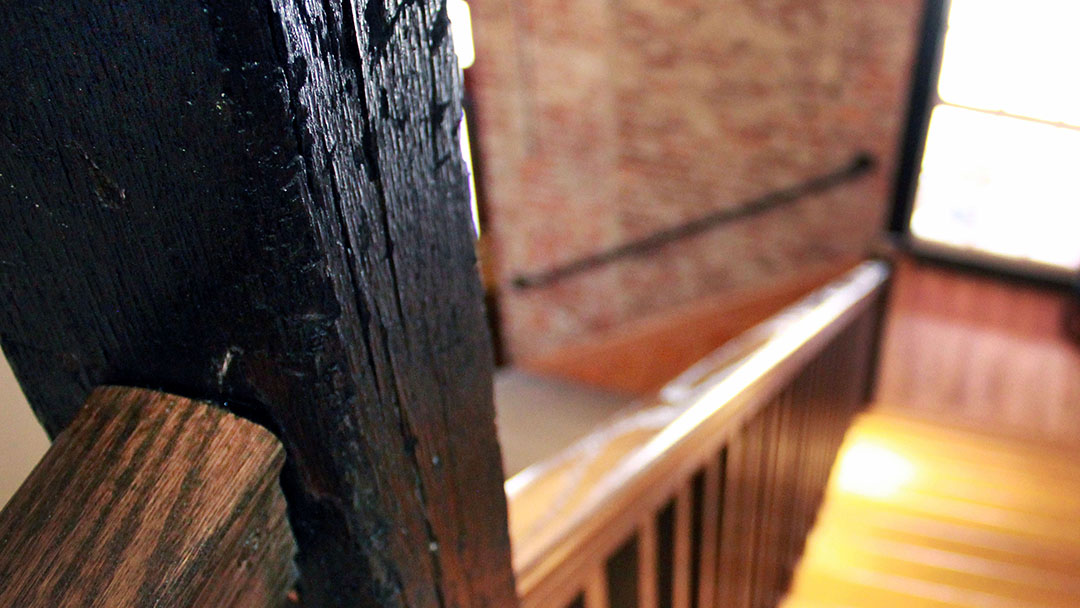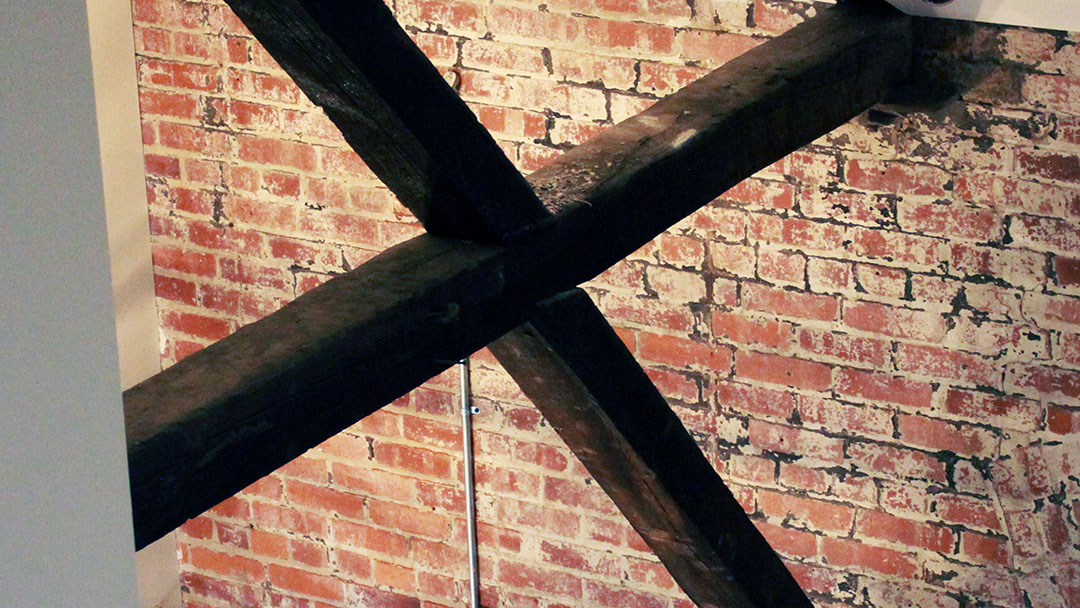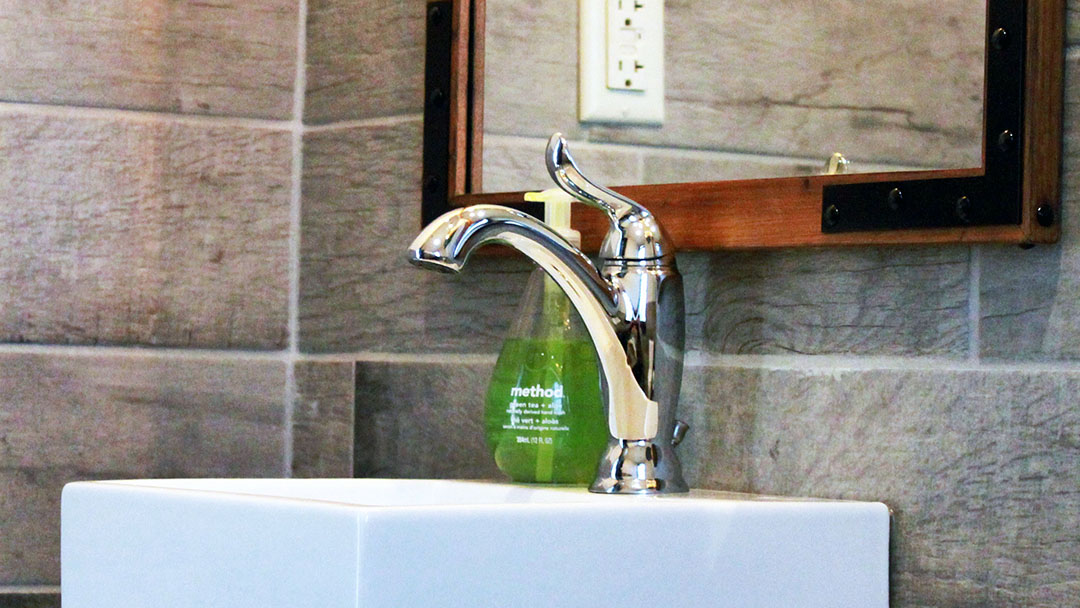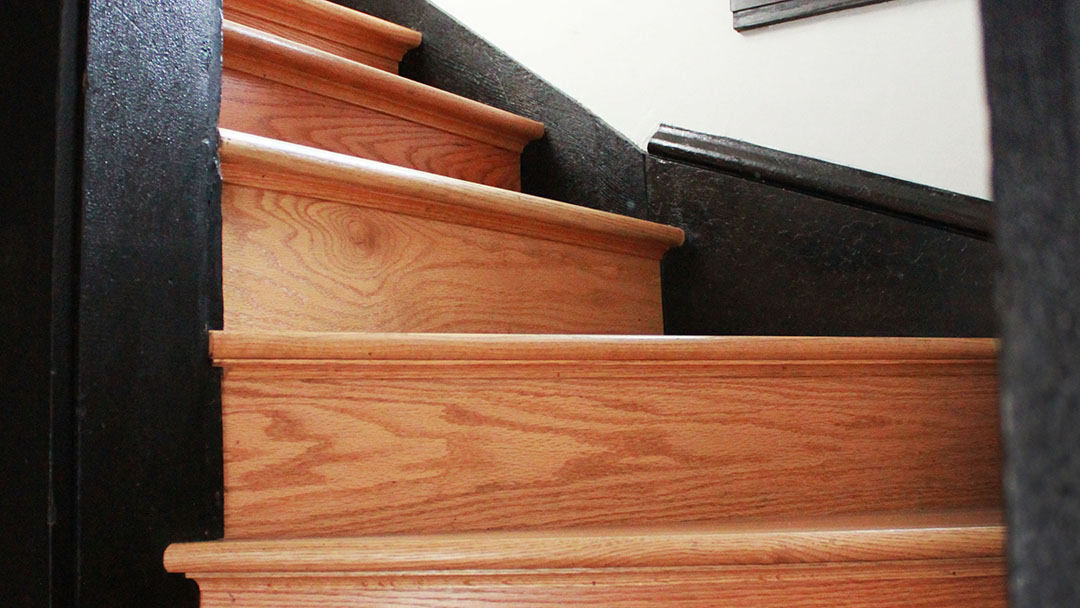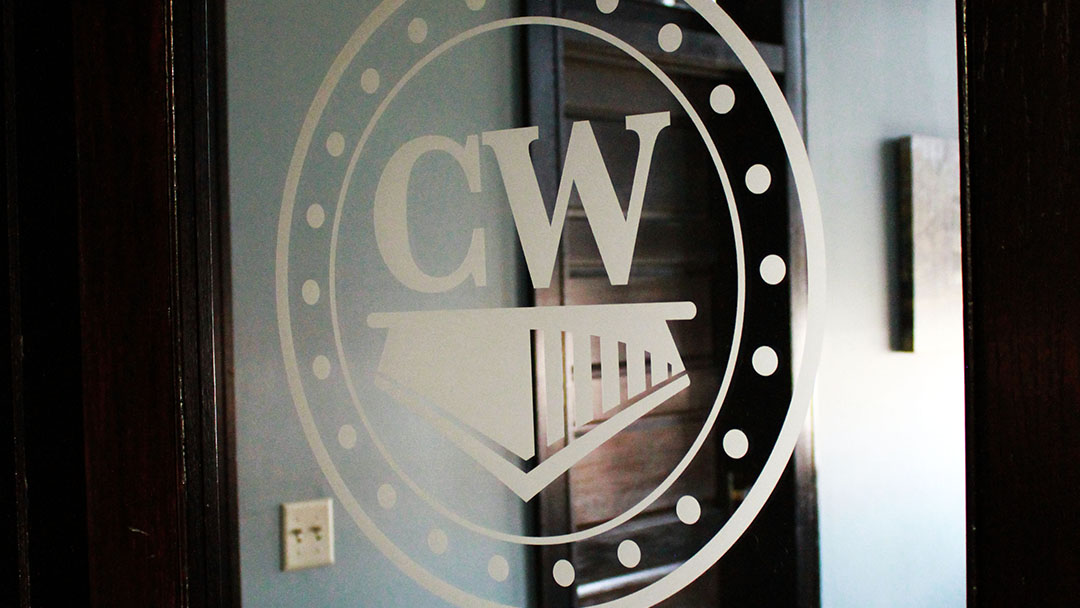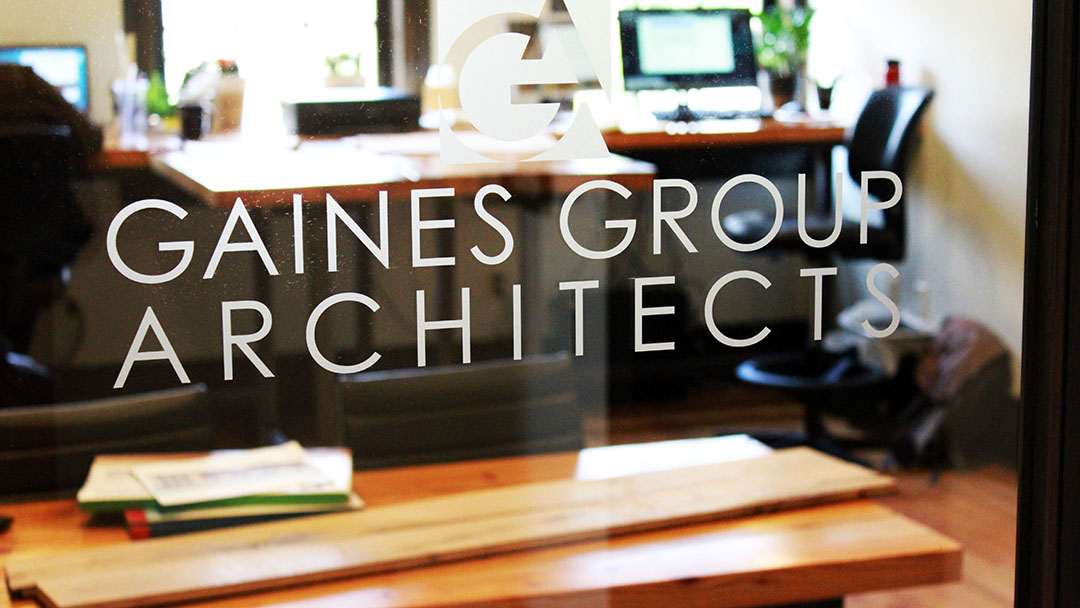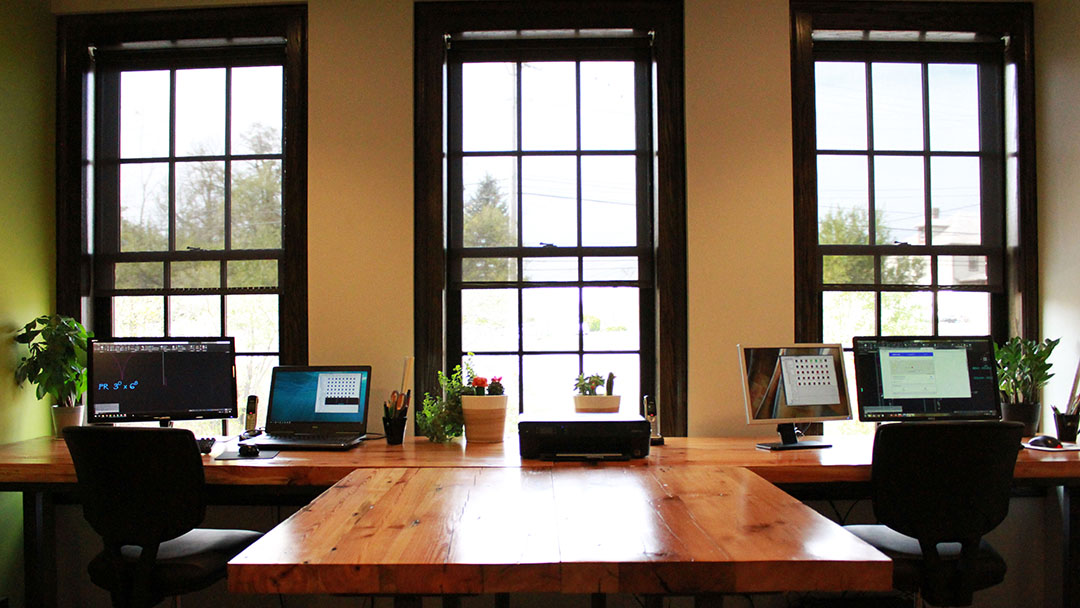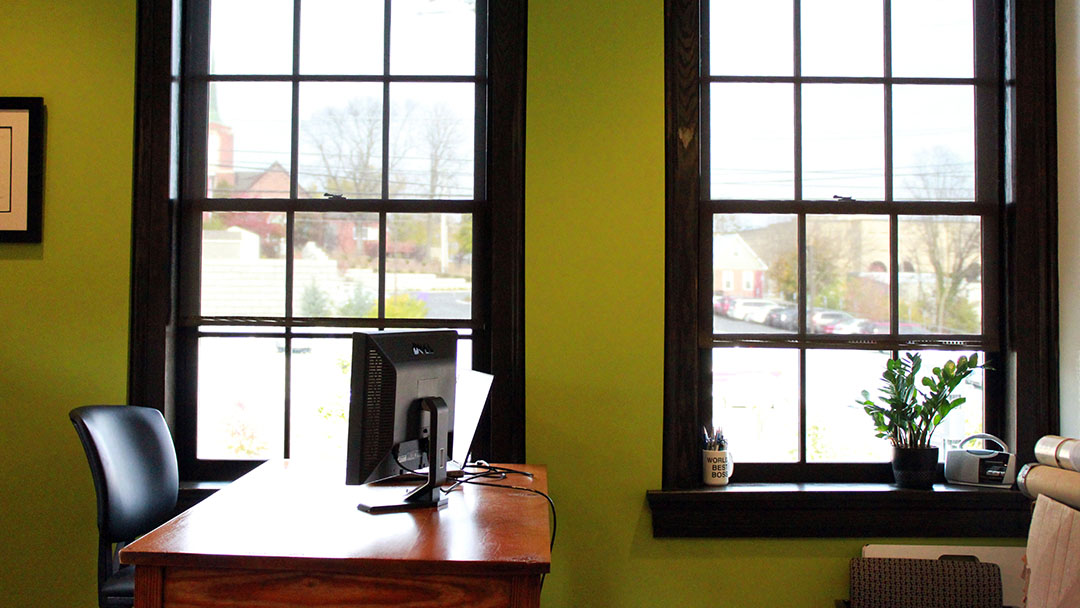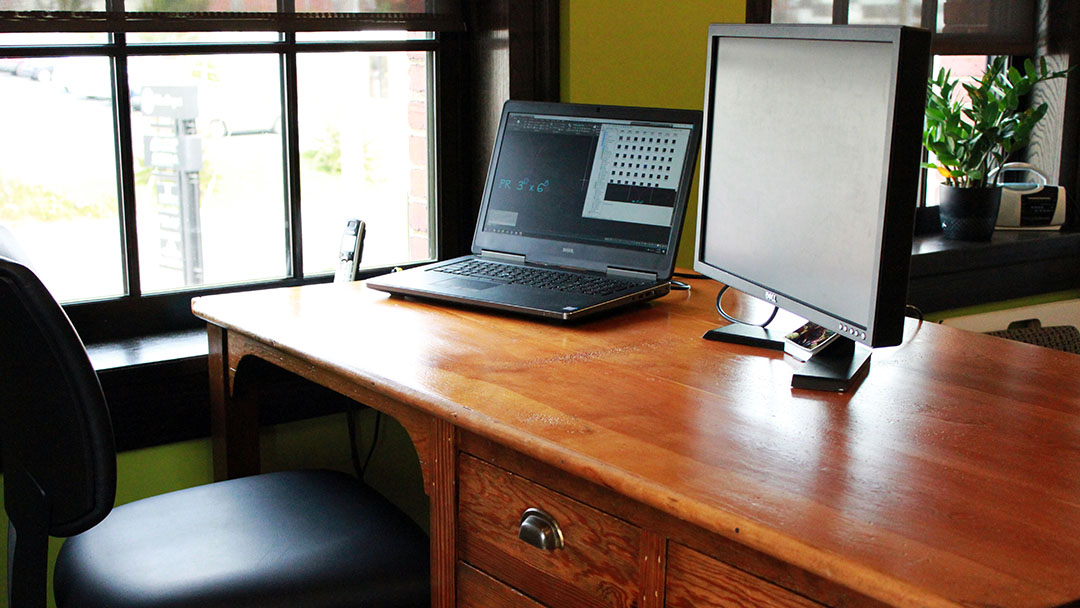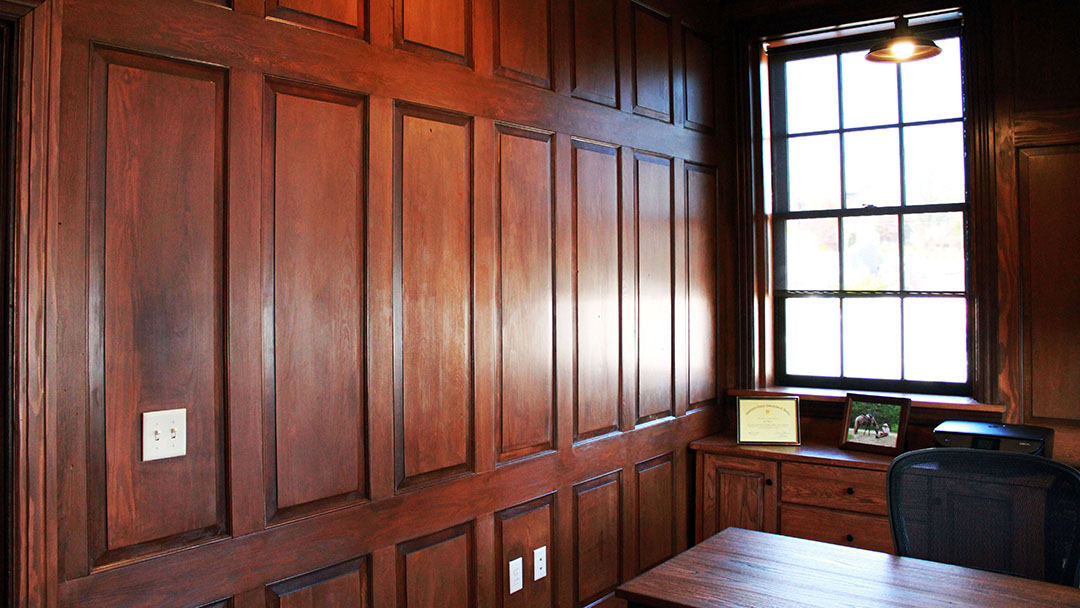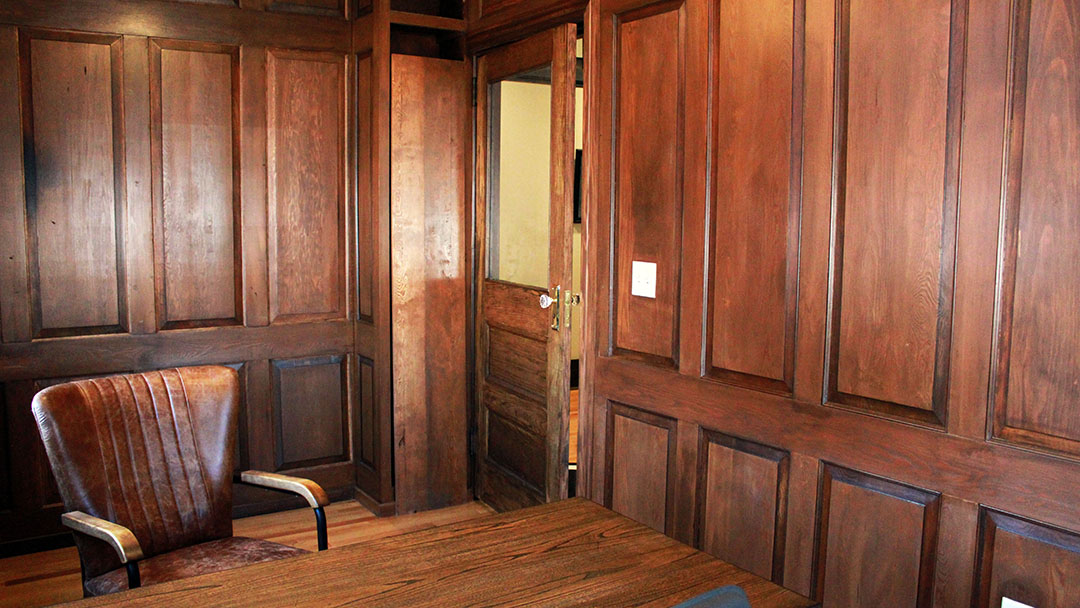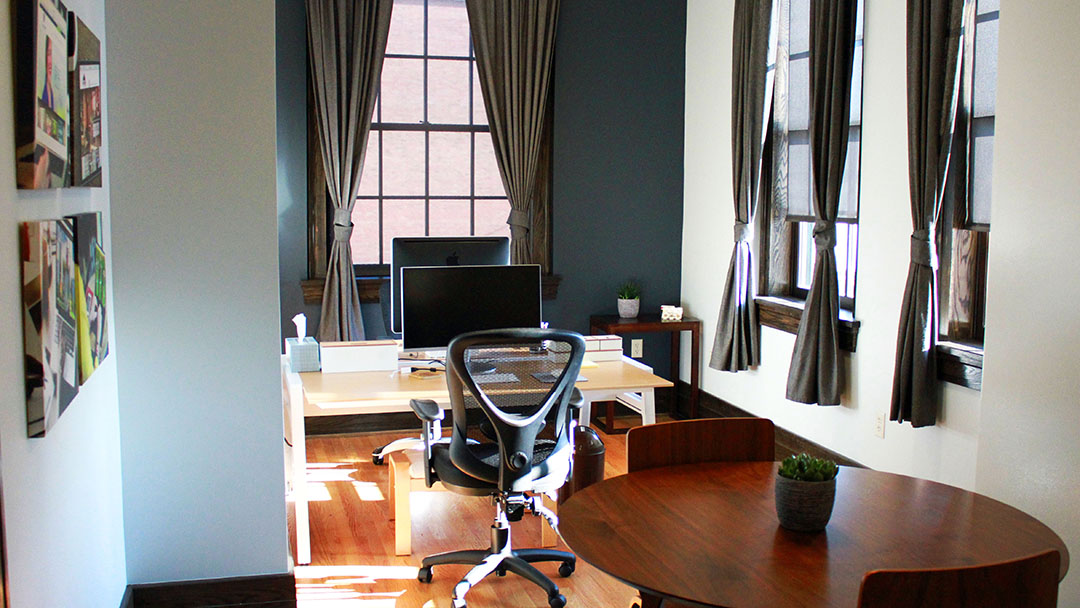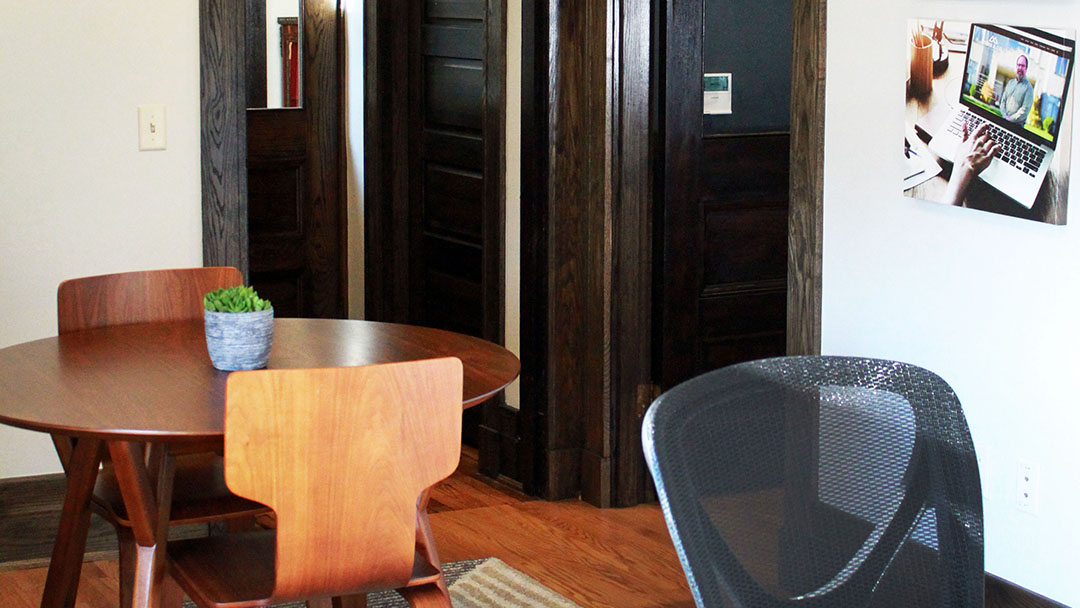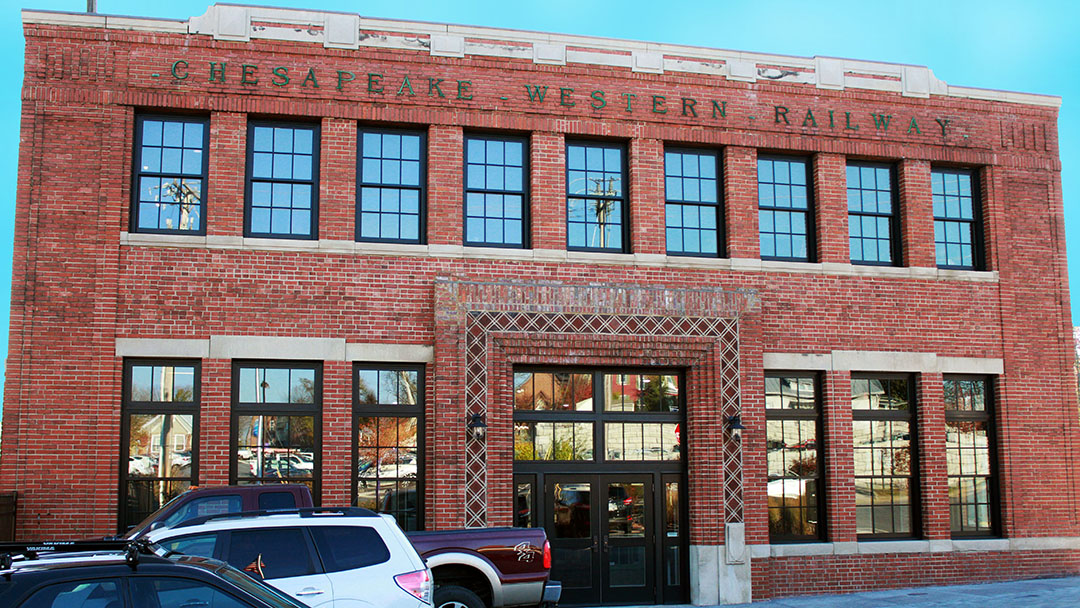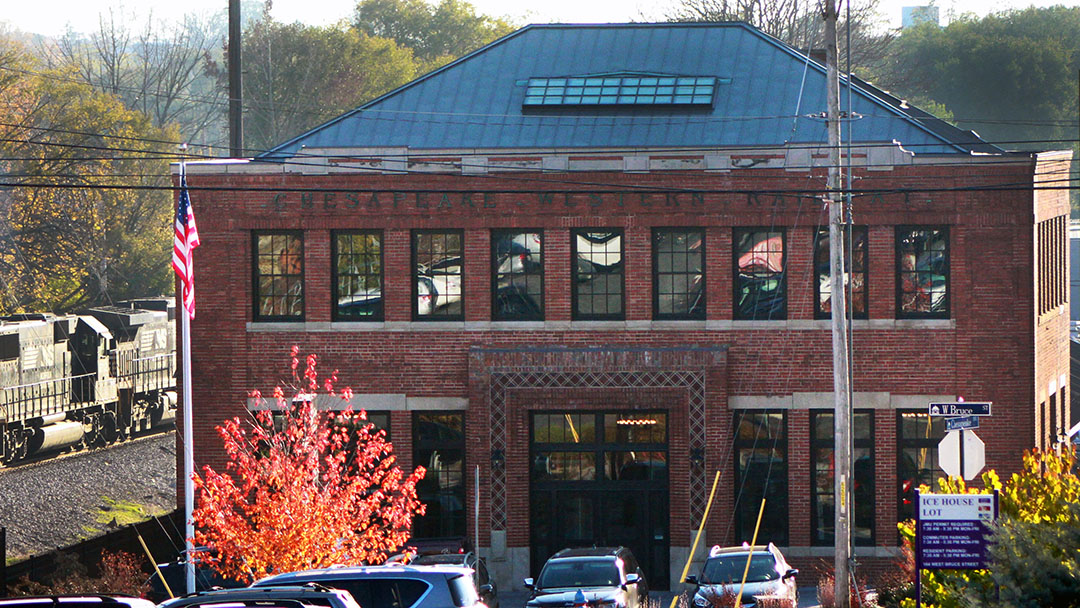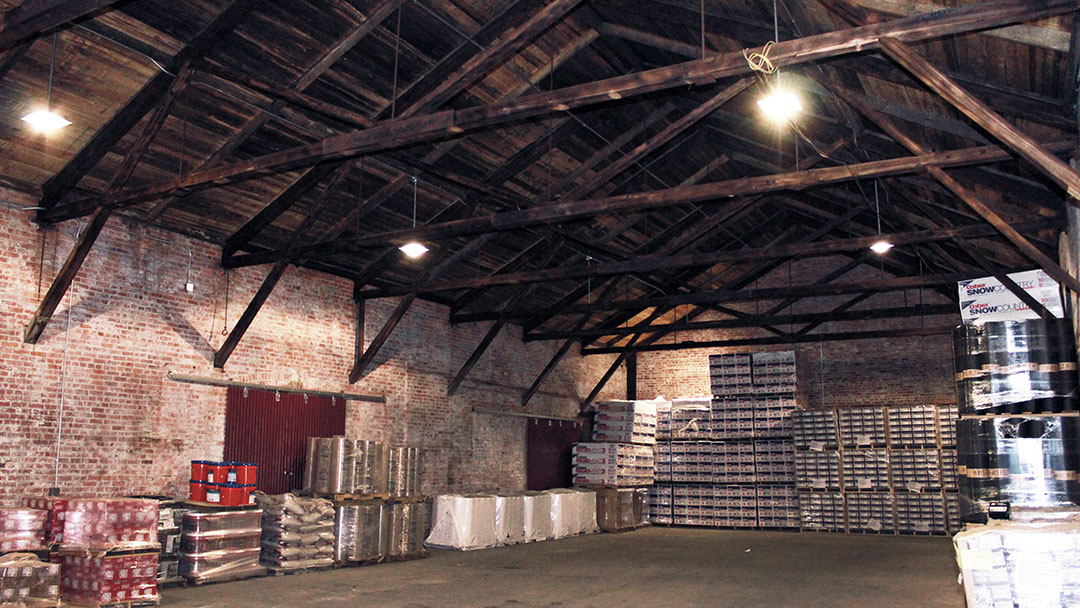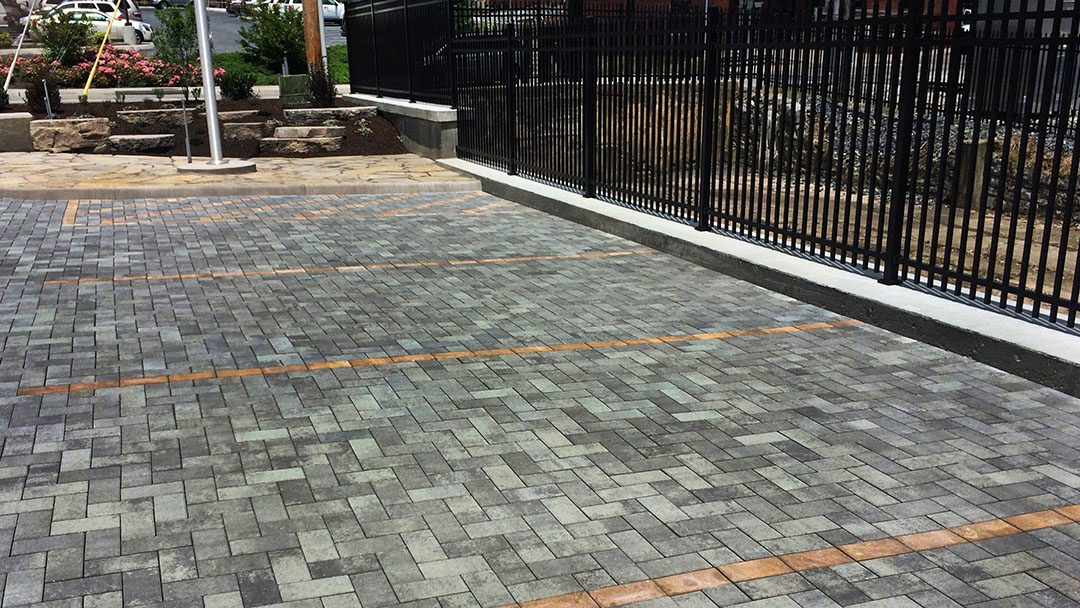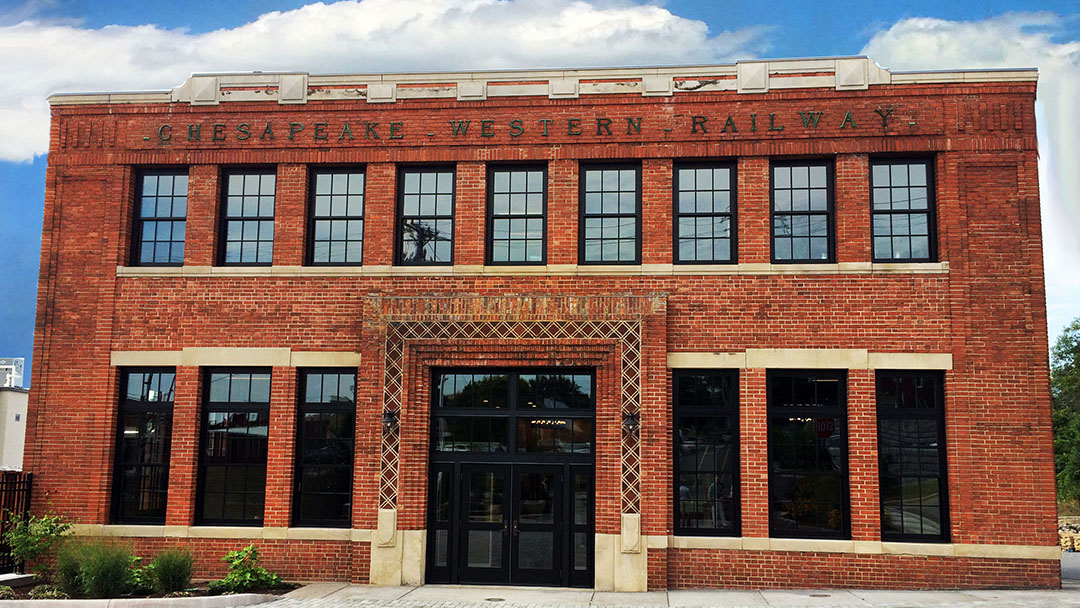
by sitemanager | Feb 21, 2023
We love working with repeat clients as we already have learned some of their language and communication styles. It is also always fun to learn a new project type and while we have done barns in the past, we had never done a horse barn so this was a fun learning opportunity. We started with an existing eight-stall rudimentary barn and teamed with Robb Construction to create a state-of-the-art twelve-stall barn that includes spacious common areas and a one-bedroom apartment. The vision driving the project was to have a boutique facility readily able to accommodate both our client’s horses and their client’s horses. Lucas Equine built our custom 12 x 12’ stall fronts and removable partitions, each with its own commercial-grade fan, lights, a generous ceiling height, and a Dutch door facing outside. Six of the stalls feature access to 12 x 24’ sand paddocks. All construction and design decisions were made with safety and comfort in mind for the horses. The Stave Mill Farm project is a great example of collaboration. Our role in the project as architect was to make sure the structure works and the room sizes met the criteria we were provided. There were other experts that knew the program better than us and we were counting on them to teach and lead us through the design process to make sure we met the goals of the project. The results are incredible and the barn and apartment as the state-of-the-art barn that the client described to me in the first visit to the site.

by sitemanager | Feb 20, 2023
The Eastern Mennonite School (EMS) renovation project had a straightforward goal, convert an existing three-story office building into an Elementary school. The added challenge with any of our non-profit clients is using their budget as efficiently as possible and creating opportunities through architecture to highlight their culture. Therefore, this project focuses on sustainability / creation care, an important element of the culture of the school. Using our understanding of building science, we were able to save an existing building, incorporate environmentally sensitive design strategies, as well as highlight those elements for the students in the building. The design of the EMS facility maximizes daylight into all classrooms, provides multiple points of exterior access to allow for environmental teaching opportunities, and has flexible room sizes for diversity of class settings. The existing building footprint provides 9 classrooms, a teaching kitchen, teacher workroom, and restroom facilities. The additions to the existing footprint house circulation towers, the administrative wing and a phase II of the project which will allow for large scale gatherings. Working together with EMS teachers, administration, and students, the design evolved into a space that will enhance learning opportunities as well as highlight building systems. Viewing windows allow for students to explore “how a building works.” This experiential learning component marries sustainability and building science with traditional math, science, and social studies. Creating unique opportunities using architectural elements is a key component of our design strategies for our clients.

by sitemanager | Feb 20, 2023
PROJECT LOCATION: Harrisonburg, Virginia
CONTRACTOR: JM Apartments
PHOTOGRAPHY: Jeremy Keegan
The Chesapeake Western Depot is a 1913 National Historic Register former passenger train station gem in downtown Harrisonburg. Unfortunately, it has seen a lot of tragedy. The structure, built out of spite according to a newspaper article, was home to what would be a financially insecure small-line passenger and freight rail line. This “crooked and weedy” headquarters features a robust two-story brick building with large windows used for natural light and natural cooling. Open lattice wood walls above white brick inside resist moisture (1913 Building Science). 16′ tall oak ceilings are in what once were the passenger waiting rooms. The second floor that once housed corporate CW offices is now our office, and the rear that was once a freight hub is now a storage warehouse for Monger Lumber. There have been 5 fires in the building, including the 5 alarm fire of 1982 which was the most damaging, shutting down the building for 35 years. The result was water and fire damage, destroying plaster and wood before we arrived to piece the architecture back together. In formulating a plan to save the structure, and our goal was to maximize the value of the restoration. Our client wanted to restore the historic character, tell the story of the building, recognize and overcome the comfort challenges of a brick building by appropriately insulating, and repair the water and fire damage in historically accurately ways, all while maintaining a conservative budget. We worked within the National Historic Preservations Standards and Guidelines to find the appropriate solutions for this structure and our clients goals, working hard to find the right places to restore and others to replace. Using our knowledge of building science, we created comfort and reduced energy bills while maintaining the historical accuracy of window sill depth and managing moisture flow through our masonry walls. We are very proud of the end results and welcome you to stop by and take a look at the building.
